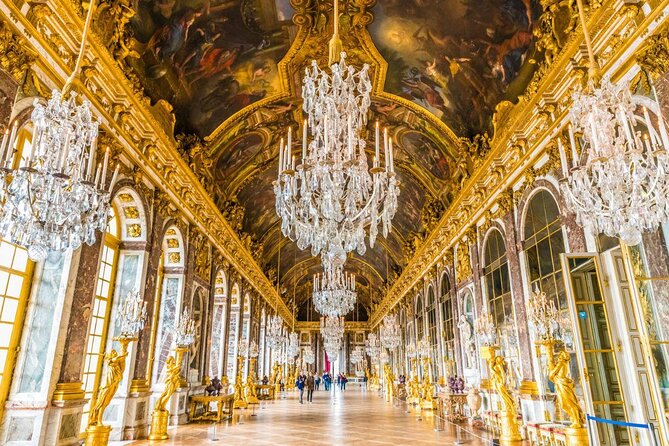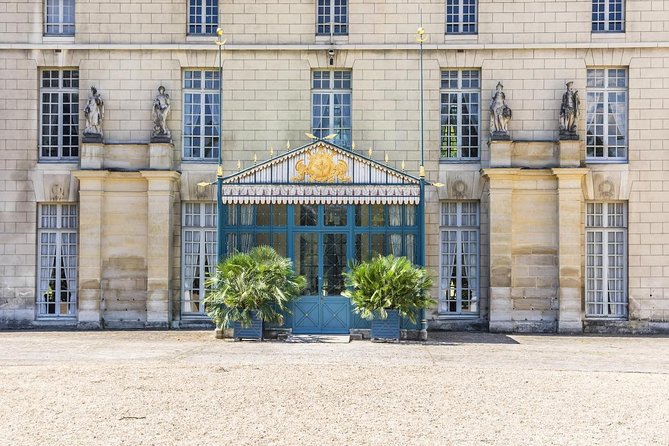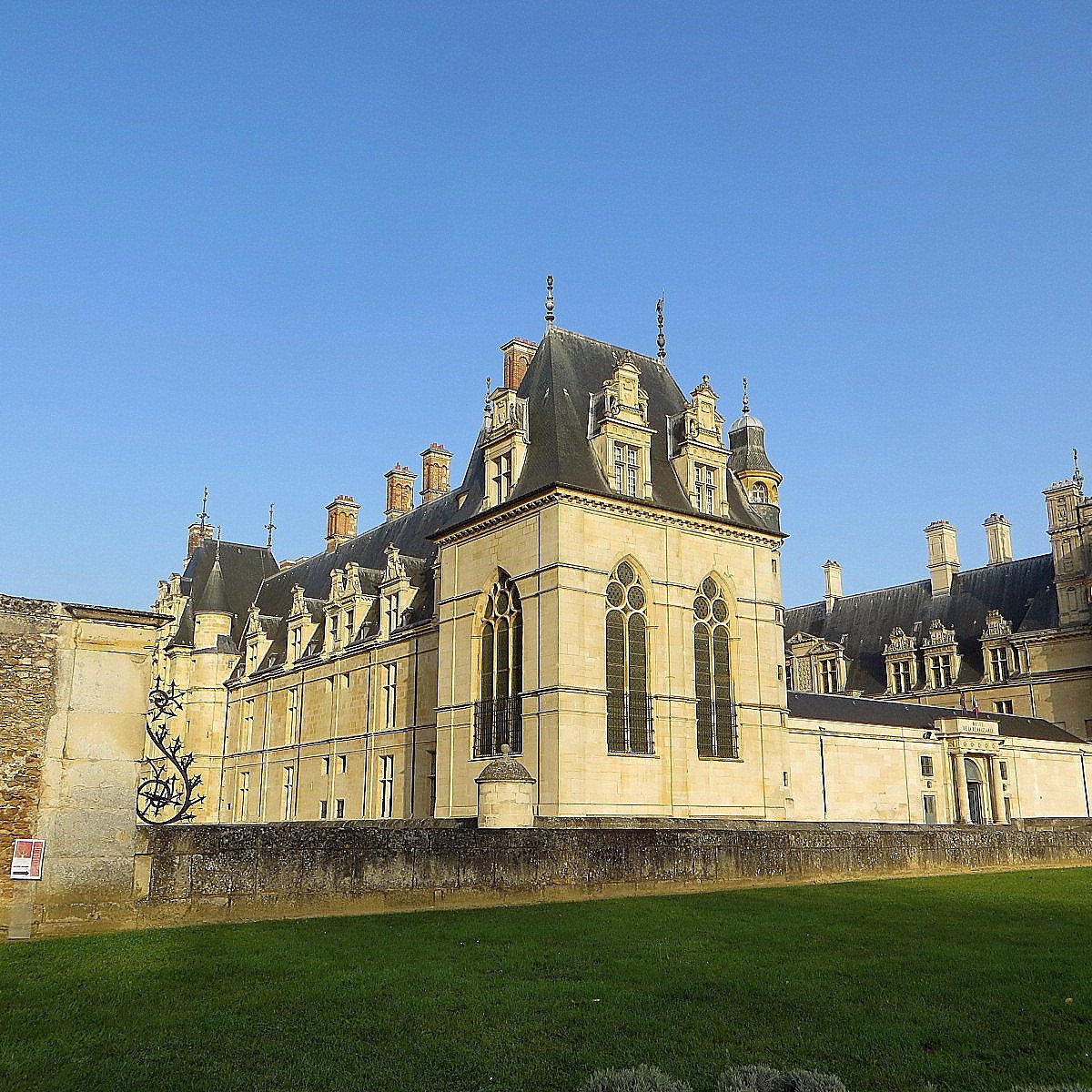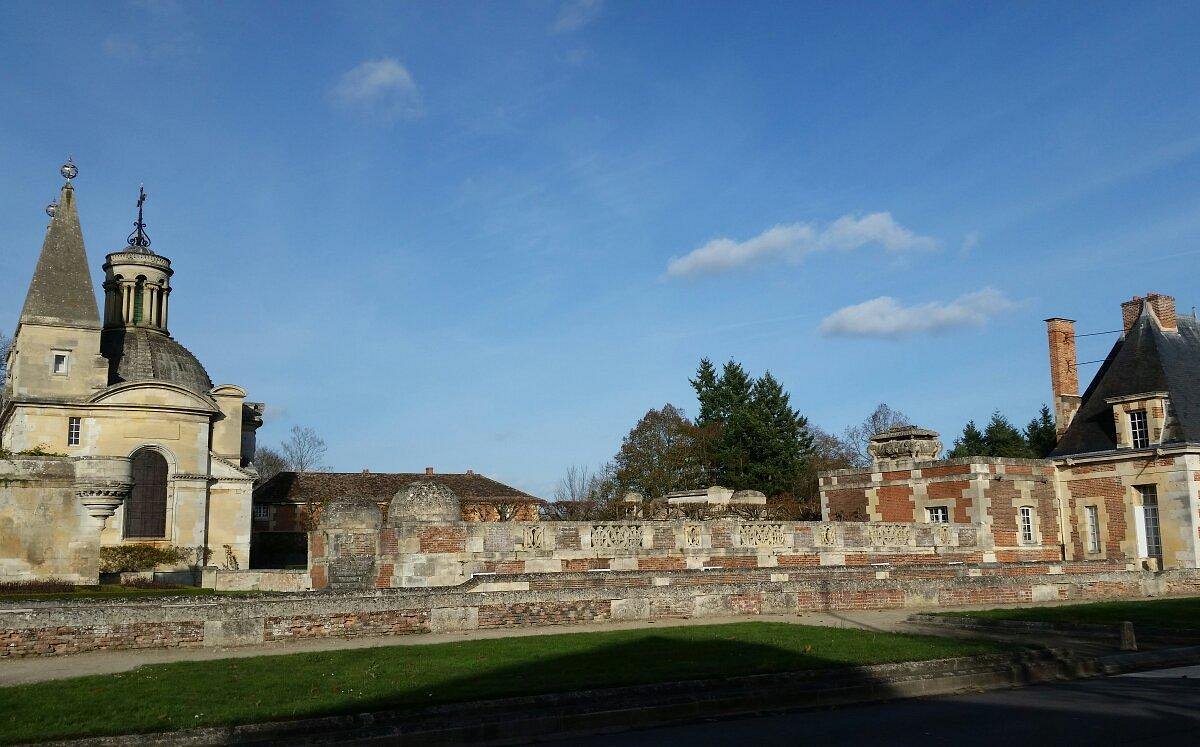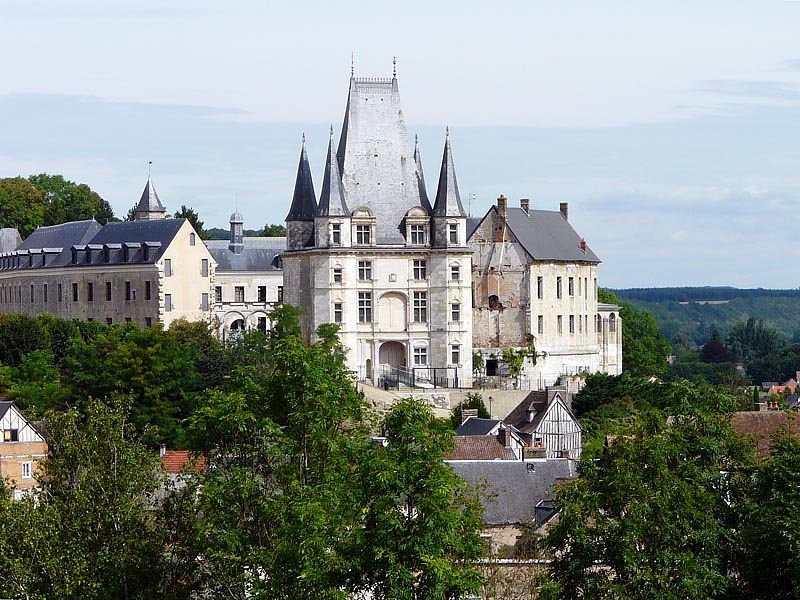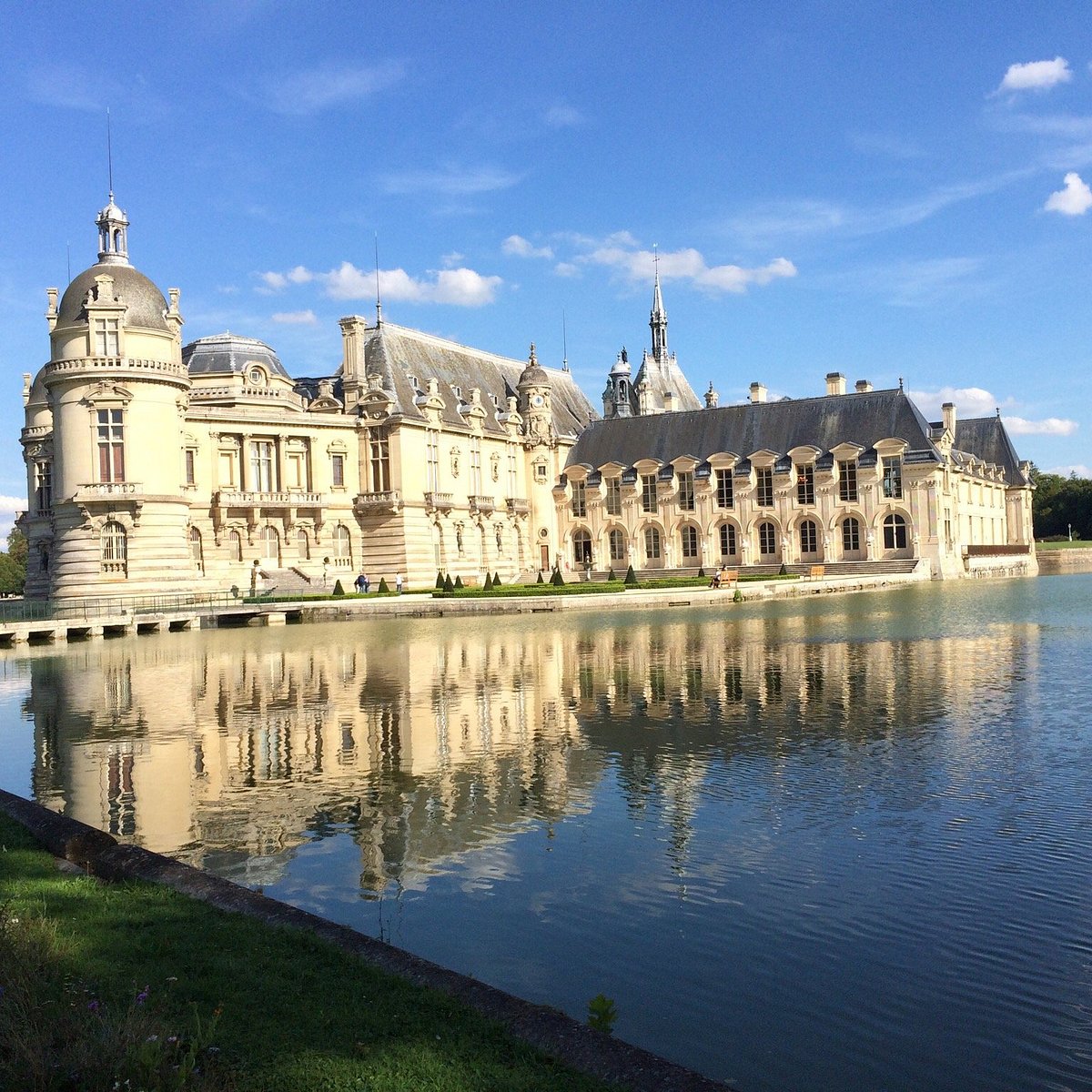Ultimate Chateau Travel Guide for Northern France - 2025

Île-de-France (Paris)
1. Palace of Versailles
Saving Castles Regal Ranking 10/10 👑
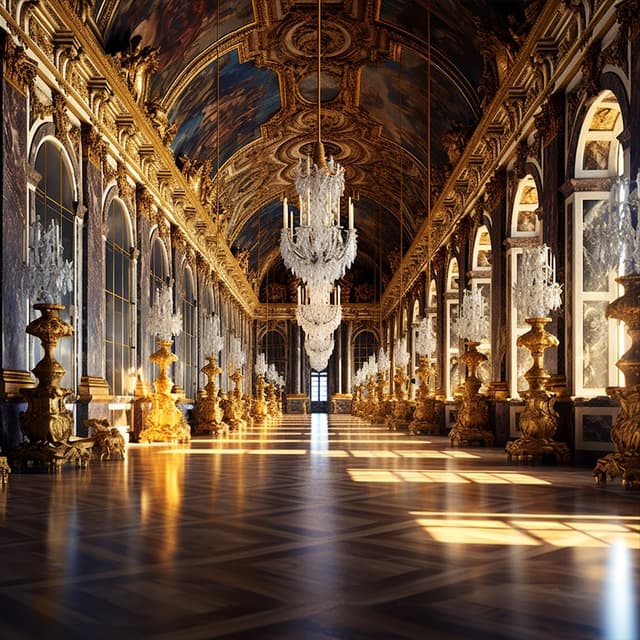
📜 Palace of Versailles' History:
The Palace of Versailles, located just outside Paris, is one of the most famous and opulent royal residences in the world. Originally built as a hunting lodge in 1624 by Louis XIII, it was transformed into a magnificent palace by Louis XIV, the Sun King, in the late 17th century.
The palace is renowned for its stunning architecture and lavish interiors. Key features include the Hall of Mirrors, a 73-meter-long gallery adorned with 357 mirrors, the King's and Queen's State Apartments, and the Royal Chapel. The palace's façade stretches for 570 meters and is adorned with intricate sculptures and ornamentations. The entire complex is a masterpiece of French Baroque architecture and decorative arts.
Surrounding the palace are extensive formal gardens designed by André Le Nôtre, covering nearly 2,000 acres. These include ornate fountains, sculptures, and manicured lawns, as well as the Grand and Petit Trianon palaces and Marie Antoinette's Estate. The Palace of Versailles served as the seat of political power in France from 1682 until the French Revolution in 1789. Today, it is a UNESCO World Heritage site and one of France's most visited tourist attractions, offering visitors a glimpse into the grandeur of the French monarchy and the history of France.
🎫 Recommended Tickets & Tours:
🛏️ Lodging Near the Palace of Versailles:
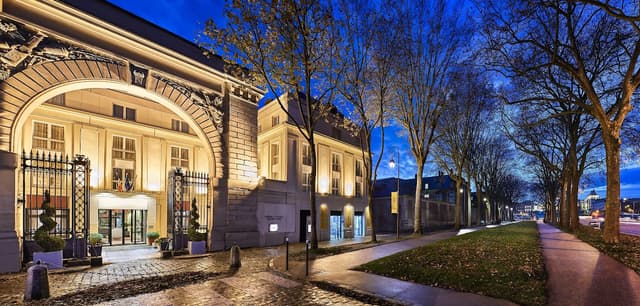
🍽️ Dining Near the Palace of Versailles:
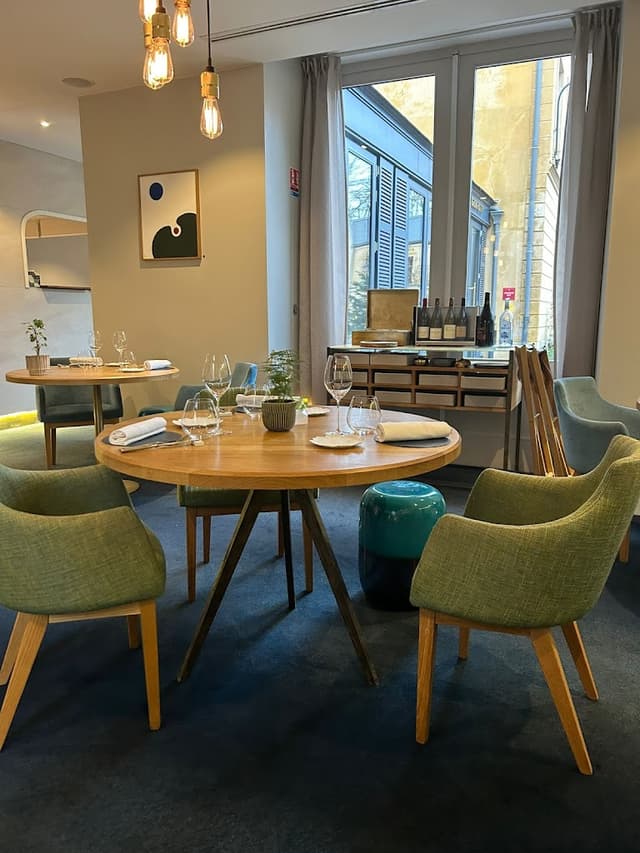
2. Château de Fontainebleau
Saving Castles Regal Ranking 9/10 👑
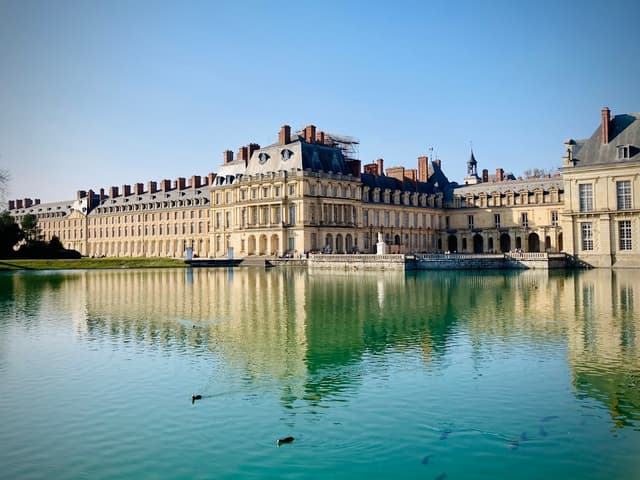
📜 Château de Fontainebleau's History:
Château de Fontainebleau, located about 55 kilometers southeast of Paris, is one of the largest French royal châteaux. With over 800 years of continuous royal presence, it has been a residence for French monarchs from Louis VII to Napoleon III.
The castle's architecture is a blend of medieval, Renaissance, and classical styles, reflecting its long history of additions and renovations. Key features include the Renaissance-style Fountain Court, the ornate Ballroom, and the famous horseshoe-shaped staircase where Napoleon bid farewell to his Old Guard in 1814. The château boasts over 1500 rooms, including lavishly decorated state apartments and galleries.
Fontainebleau is surrounded by extensive gardens and parks, including formal French gardens, an English garden, and a large forest that was once a royal hunting ground. The château houses several museums, including the Napoleon I Museum and the Chinese Museum. Its rich history, diverse architectural styles, and vast art collections make Château de Fontainebleau a UNESCO World Heritage site and a major cultural landmark, offering visitors a comprehensive journey through French royal history and art.
🎫 Recommended Tickets & Tours:
🛏️ Lodging Near Château de Fontainebleau:
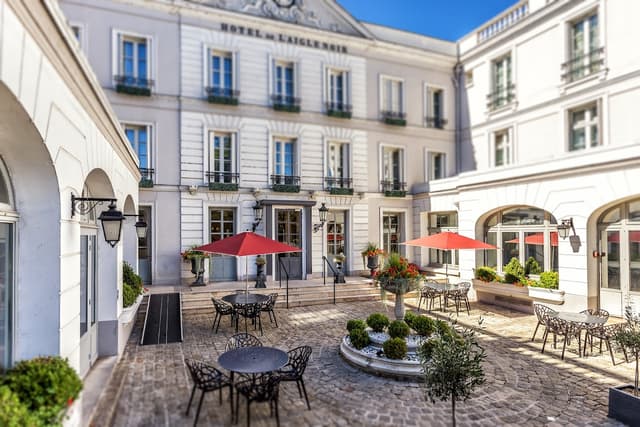
🍽️ Dining Near Château de Fontainebleau:
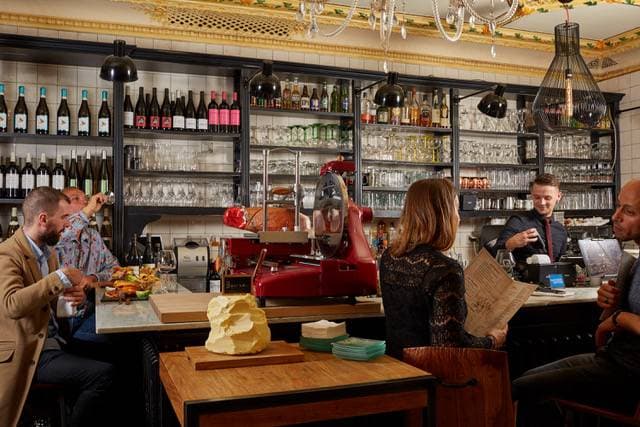
3. Château de Vaux-le-Vicomte
Saving Castles Regal Ranking 8/10 👑
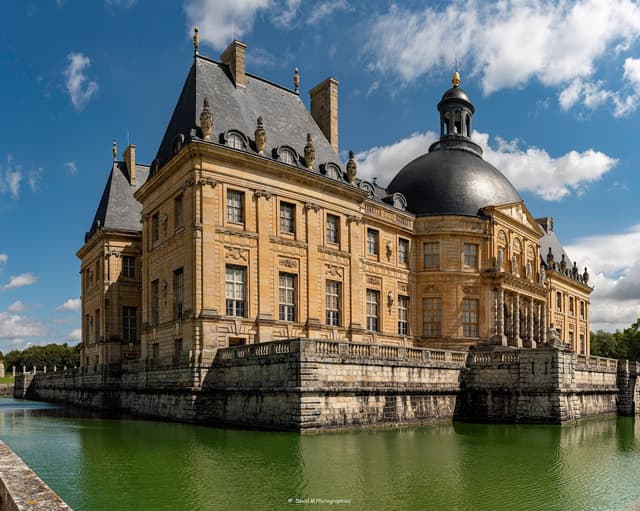
📜 Château de Vaux-le-Vicomte's History:
Château de Vaux-le-Vicomte, located about 50 kilometers southeast of Paris, is a masterpiece of 17th-century French Baroque architecture and landscape design. Built between 1656 and 1661 for Nicolas Fouquet, Louis XIV's finance minister, it represents the epitome of architectural and artistic achievement of its time.
The château was a collaborative effort of three renowned artists: architect Louis Le Vau, painter Charles Le Brun, and landscape architect André Le Nôtre. Its design, with its perfect symmetry and harmonious proportions, set a new standard for European architecture and inspired the creation of Versailles. The interior is lavishly decorated with paintings, tapestries, and sculptures, showcasing the opulence of the French aristocracy.
The gardens of Vaux-le-Vicomte are equally impressive, covering 500 hectares. Le Nôtre's design includes symmetrical gardens, water features, and optical illusions that create a sense of endless perspective. The château's history is marked by drama - Fouquet's extravagant display of wealth at the castle's inaugural party in 1661 led to his arrest and imprisonment by a jealous Louis XIV. Today, Vaux-le-Vicomte is open to the public, offering visitors a glimpse into the grandeur of 17th-century French aristocratic life and the birth of the French Baroque style.
🎫 Recommended Tickets & Tours:
🛏️ Lodging Near Château de Vaux-le-Vicomte:
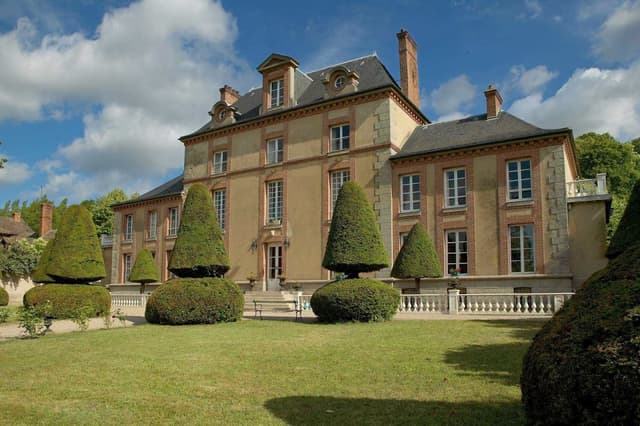
🍽️ Dining Near Château de Vaux-le-Vicomte:
4. Château de Rambouillet
Saving Castles Regal Ranking 7/10 👑
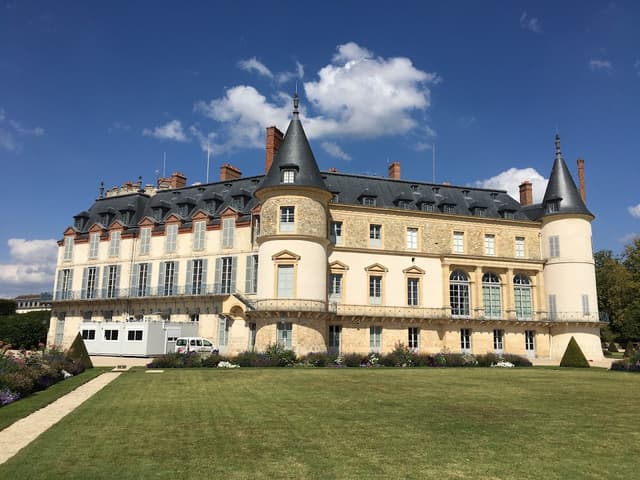
📜 Château de Rambouillet's History:
Château de Rambouillet, located about 50 kilometers southwest of Paris, is a historic castle with a rich heritage spanning from the 14th century to the present day. Originally built as a fortified manor, it has evolved into an elegant château that has served as a royal and presidential residence.
The castle's architecture reflects various periods of French history, with elements ranging from its medieval origins to later Renaissance and Classical additions. Notable features include the marble Rococo-style bathroom created for Napoleon I and the Shell Cottage, an exquisite garden folly built for Marie Antoinette. The château is surrounded by beautiful French formal gardens and an expansive forest, once a favorite hunting ground for royalty.
Rambouillet has played host to numerous historical figures and events. It was a favored retreat of Louis XVI and Marie Antoinette, later became an imperial residence under Napoleon I, and in modern times has served as a summer residence for French presidents. Today, it functions partly as a museum and partly as a venue for diplomatic meetings. The château and its grounds offer visitors a journey through French history, architecture, and landscape design, showcasing the evolution of royal and presidential lifestyles over the centuries.
🎫 Recommended Tickets & Tours:
🛏️ Lodging Near Château de Rambouillet:
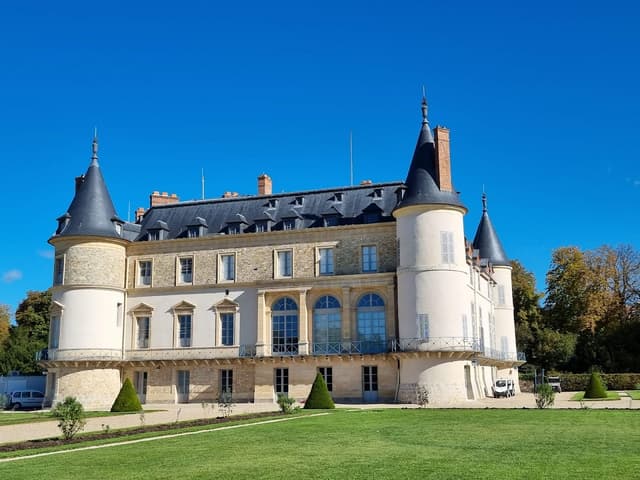
🍽️ Dining Near Château de Rambouillet:
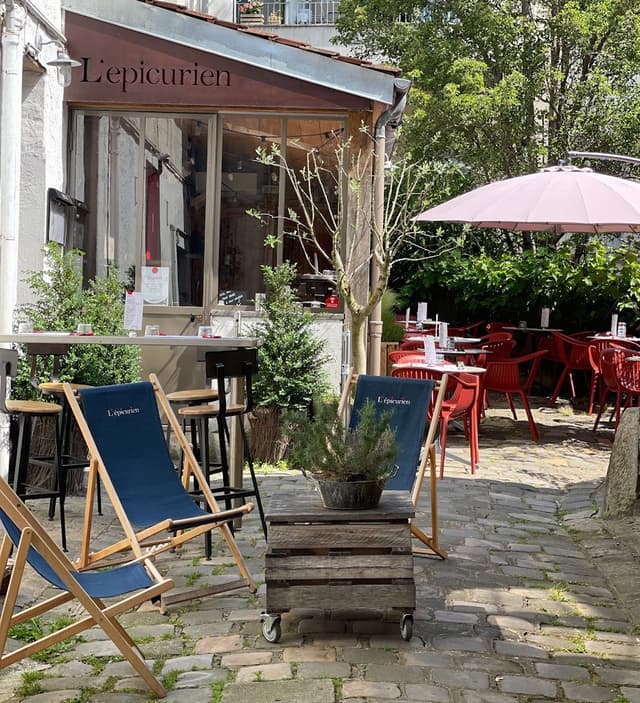
5. Château de Malmaison
Saving Castles Regal Ranking 7/10 👑
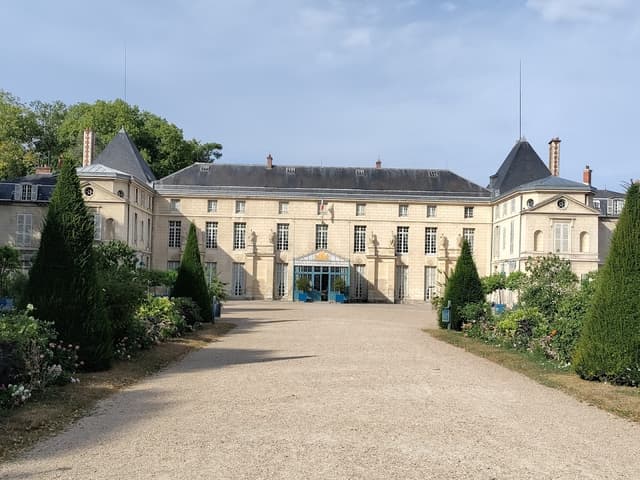
📜 Château de Malmaison's History:
Château de Malmaison, located on the western outskirts of Paris, is best known as the residence of Empress Joséphine de Beauharnais, the first wife of Napoleon Bonaparte. Purchased by Joséphine in 1799, the château became a significant site during the Consulate period of French history.
The château's architecture and interior design reflect the Empire style, popularized during Napoleon's reign. Joséphine, with the help of architects Charles Percier and Pierre Fontaine, transformed the modest manor house into an elegant country estate. The interior features neoclassical decorations, including trompe l'oeil paintings, luxurious furnishings, and an impressive art collection.
Malmaison is particularly famous for its beautiful gardens, where Joséphine cultivated a wide variety of exotic plants and flowers, including many species brought back from Napoleon's campaigns. After her divorce from Napoleon, Joséphine continued to live at Malmaison until her death in 1814. Today, the château serves as a museum dedicated to Napoleonic history and the life of Joséphine, offering visitors a intimate look at the private life of France's imperial couple and the art and culture of the Empire period.
🎫 Recommended Tickets & Tours:
🛏️ Lodging Near Château de Malmaison:
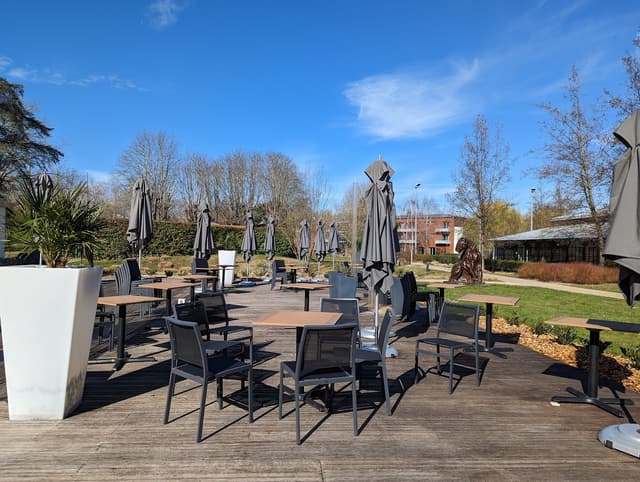
🍽️ Dining Near Château de Malmaison:
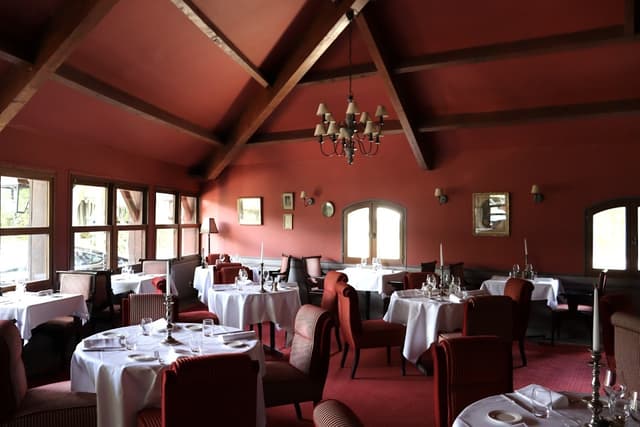
6. Château de Saint-Germain-en-Laye
Saving Castles Regal Ranking 8/10 👑
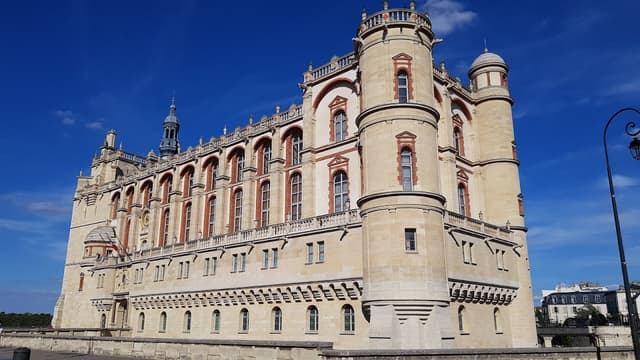
📜 Château de Saint-Germain-en-Laye's History:
Château de Saint-Germain-en-Laye, located in the western suburbs of Paris, is a significant royal castle with a history dating back to the 12th century. It served as a royal residence for several French monarchs and played a crucial role in French history.
The château's current appearance dates primarily from the 16th century when Francis I had it rebuilt as a Renaissance palace. Its most striking feature is the exterior, characterized by its pink brick and white stone façade, typical of French Renaissance architecture. The castle is surrounded by extensive formal gardens designed by André Le Nôtre, offering beautiful views over Paris.
Today, Château de Saint-Germain-en-Laye houses the National Museum of Archaeology, containing one of Europe's most important collections of prehistoric artifacts. The castle has witnessed numerous historical events, including the signing of the Edict of Saint-Germain in 1562 granting limited tolerance to Huguenots. It was also the birthplace of Louis XIV and the exile home of James II of England. The combination of its rich history, architectural beauty, and current function as a museum makes it a significant cultural landmark, offering visitors insights into French royal history and prehistoric archaeology.
🎫 Recommended Tickets & Tours:
🛏️ Lodging Near Château de Saint-Germain-en-Laye:

🍽️ Dining Near Château de Saint-Germain-en-Laye:
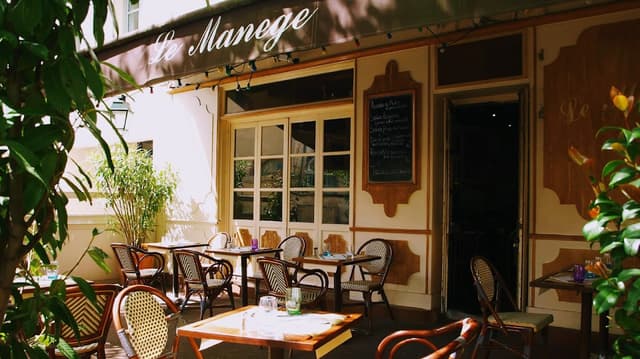
7. Château de Vincennes
Saving Castles Regal Ranking 8/10 👑
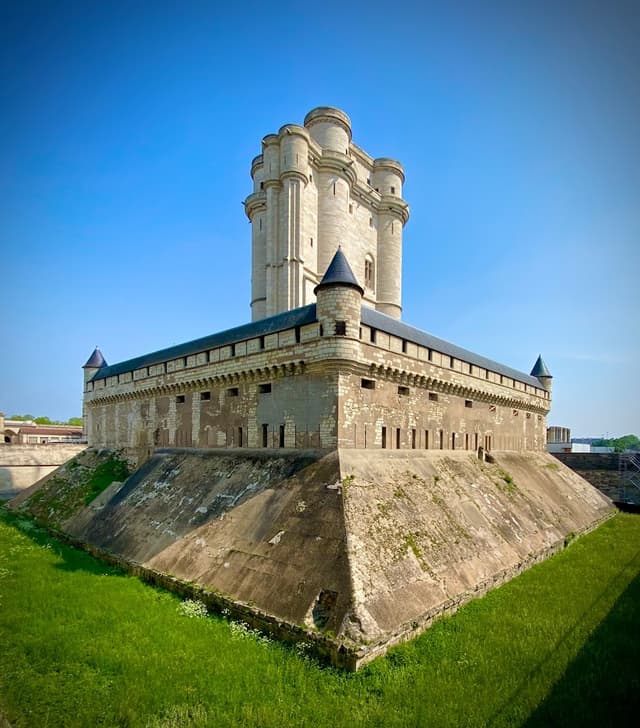
📜 Château de Vincennes' History:
Château de Vincennes, located on the eastern edge of Paris, is one of the largest and best-preserved medieval fortresses in Europe. Its history spans from the 12th to the 17th century, serving various roles throughout French history.
The château's most striking feature is its massive donjon (keep), standing at 52 meters high, which was completed in 1369 under Charles V. It's surrounded by a rectangular fortified enclosure with nine towers, exemplifying medieval military architecture. The Sainte-Chapelle, built in the 16th century in the Flamboyant Gothic style, is another notable structure within the complex.
Throughout its history, Château de Vincennes served as a royal residence, a state prison (holding notable figures like the Marquis de Sade), and a military stronghold. In the 17th century, Louis XIV commissioned significant additions before moving the court to Versailles. Today, the château houses part of the historical service of the French Armed Forces and is open to the public as a national monument. Visitors can explore the donjon, the chapel, and the 14th-century royal apartments, offering a comprehensive view of French medieval and early modern history.
🎫 Recommended Tickets & Tours:
🛏️ Lodging Near Château de Vincennes:
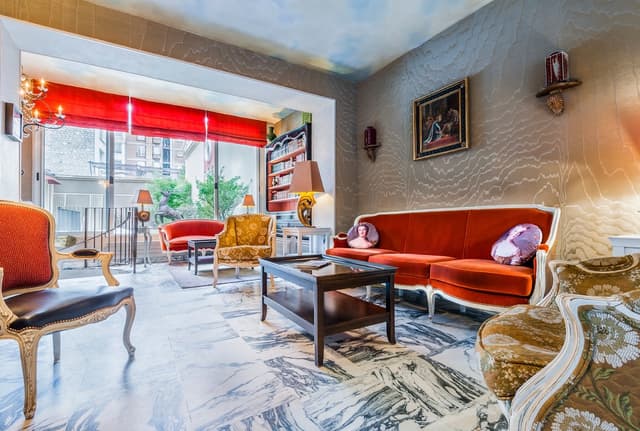
🍽️ Dining Near Château de Vincennes:
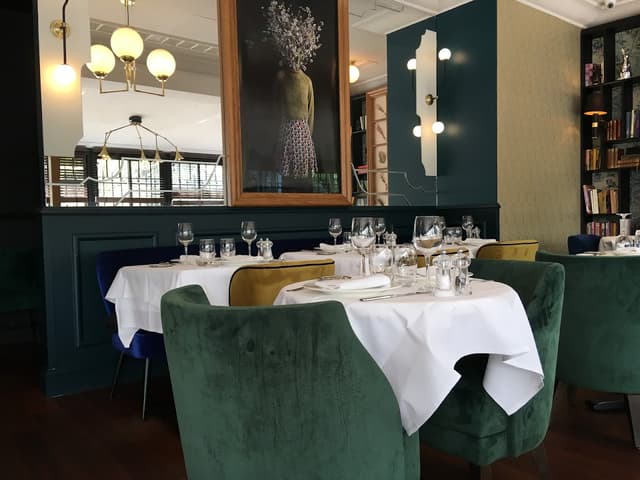
8. Château de Breteuil
Saving Castles Regal Ranking 7/10 👑
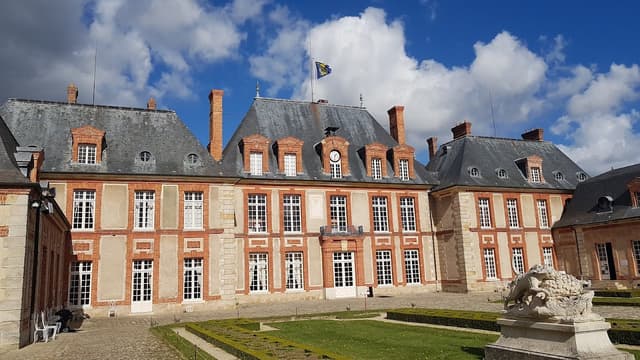
📜 Château de Breteuil's History:
Château de Breteuil, located in the Chevreuse Valley about 35 kilometers southwest of Paris, is a beautiful 17th-century castle known for its well-preserved architecture and its unique blend of history and fairy tales.
The château, which has been in the Breteuil family for over four centuries, showcases classic French architecture of the Louis XIII style. Its elegant façade, symmetrical design, and manicured French gardens reflect the grandeur of the period. The interior is lavishly decorated with period furniture, paintings, and tapestries, offering visitors a glimpse into the lives of French nobility over the centuries.
What sets Château de Breteuil apart is its dedication to storytelling. The castle features wax figures created by the Grévin Museum, depicting both historical scenes and characters from Charles Perrault's fairy tales. This unique approach brings history to life and makes it particularly appealing to families. The surrounding park, with its maze and themed gardens, adds to the enchanting atmosphere. Today, Château de Breteuil offers a delightful mix of historical education and imaginative entertainment, making it a popular destination for those seeking a different castle experience near Paris.
🎫 Recommended Tickets & Tours:
🛏️ Lodging Near Château de Breteuil:
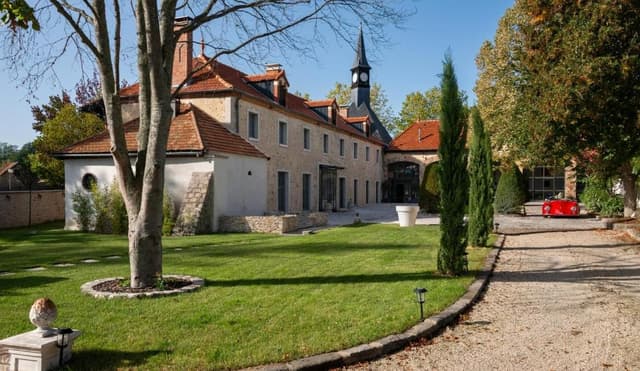
🍽️ Dining Near Château de Breteuil:
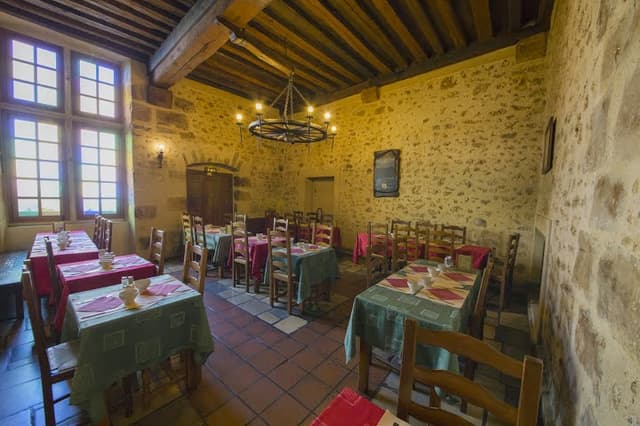
9. Château de Monte-Cristo
Saving Castles Regal Ranking 6/10 👑
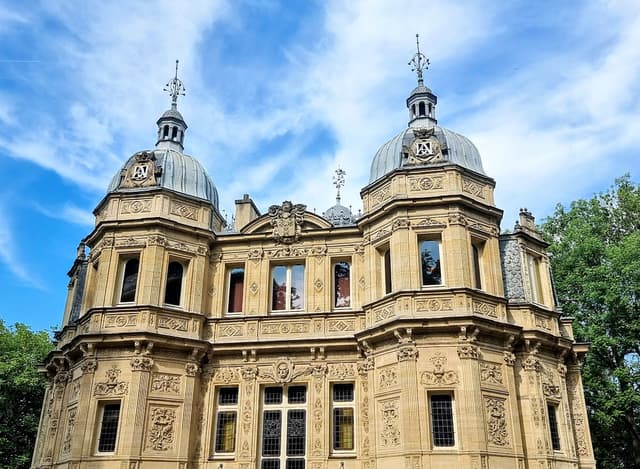
📜 Château de Monte-Cristo's History:
Château de Monte-Cristo, located in Port-Marly, about 20 kilometers west of Paris, is a unique and picturesque castle built by the famous French author Alexandre Dumas in 1846. It was named after his hugely successful novel, "The Count of Monte Cristo".
The estate consists of two distinct buildings: the Château d'If, Dumas' actual residence, and the Château de Monte-Cristo, a small castle-like structure he used as his writing studio. The Château d'If is designed in a Renaissance style with ornate details, while the writing studio is adorned with intricate Moorish decorations, reflecting Dumas' romantic and exotic tastes.
The gardens surrounding the château are equally impressive, featuring grottos, rockeries, and water features that create a fairytale-like atmosphere. Today, the château serves as a museum dedicated to Alexandre Dumas' life and work. Visitors can explore the author's lavishly decorated rooms, view personal belongings and manuscripts, and learn about his extraordinary life and literary career. The Château de Monte-Cristo offers a fascinating glimpse into the world of one of France's most beloved authors and the extravagant lifestyle his success afforded him.
🎫 Recommended Tickets & Tours:
🛏️ Lodging Near Château de Monte-Cristo:
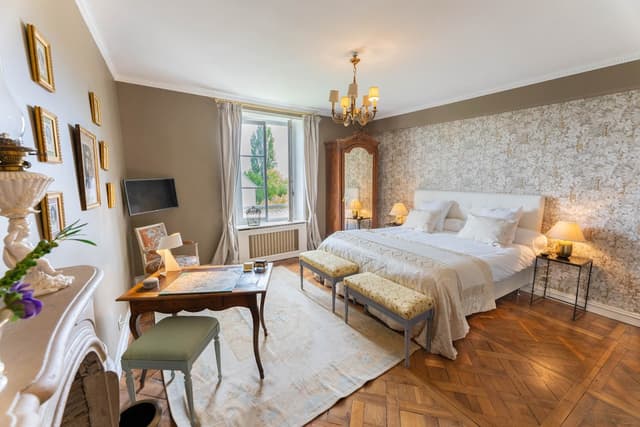
🍽️ Dining Near Château de Monte-Cristo:
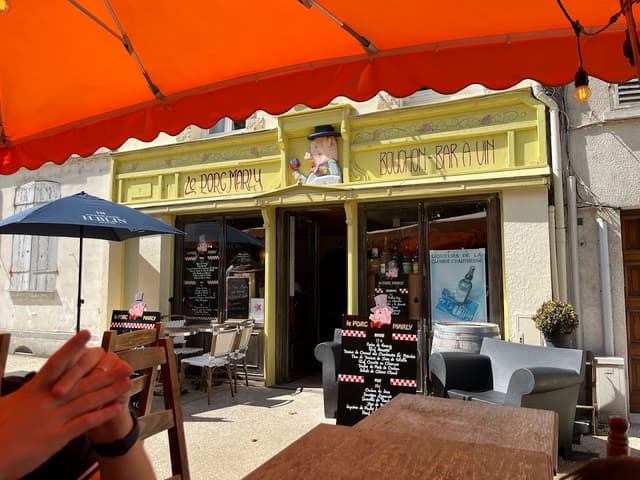
10. Château d'Écouen
Saving Castles Regal Ranking 7/10 👑
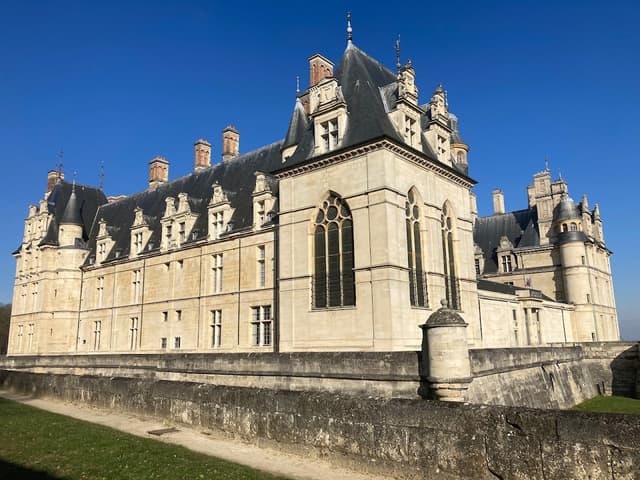
📜 Château d'Écouen's History:
Château d'Écouen, located about 20 kilometers north of Paris, is a magnificent example of French Renaissance architecture. Built between 1538 and 1550 for Anne de Montmorency, Constable of France, it represents the transition from medieval fortified castles to elegant Renaissance palaces.
The château's architecture features symmetrical design, large windows, and ornate decorations typical of the French Renaissance style. Its façade is adorned with sculptures and reliefs, while the interior boasts beautifully preserved rooms with period furnishings, tapestries, and artwork. Of particular note are the chapel with its stunning stained glass windows and the grand staircase, both exemplary of Renaissance craftsmanship.
Today, Château d'Écouen houses the National Museum of the Renaissance, containing one of Europe's finest collections of Renaissance art and decorative objects. Visitors can explore exhibits showcasing furniture, ceramics, paintings, and tapestries from the 15th to the 17th centuries. The château's combination of architectural beauty and its role as a specialized museum makes it a unique destination for those interested in Renaissance art and history, offering a less crowded alternative to some of the more famous châteaux around Paris.
🎫 Recommended Tickets & Tours:
🛏️ Lodging Near Château d'Écouen:
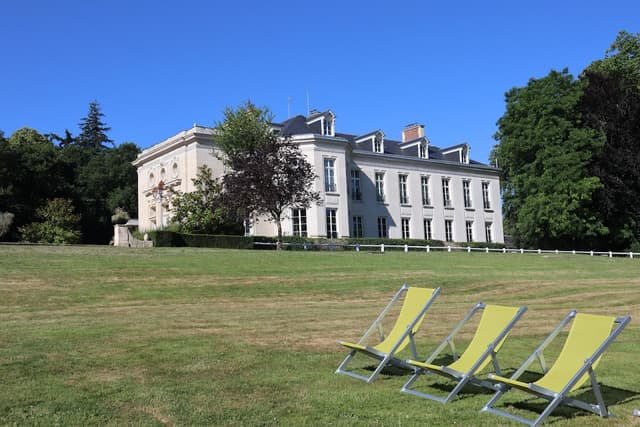
🍽️ Dining Near Château d'Écouen:

11. Château de Champs-sur-Marne
Saving Castles Regal Ranking 7/10 👑
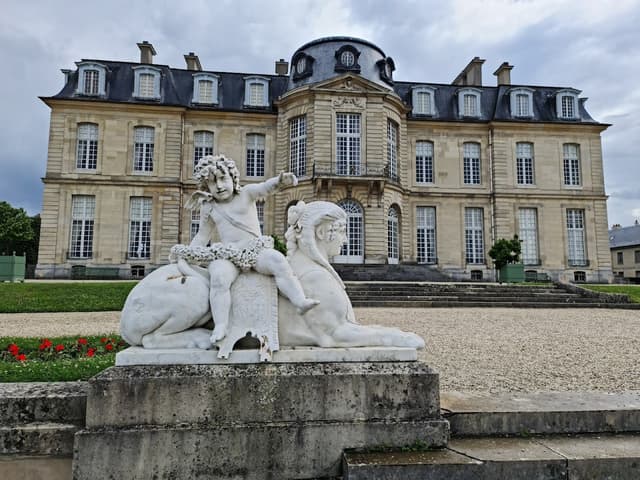
📜 Château de Champs-sur-Marne's History:
Château de Champs-sur-Marne, located about 18 kilometers east of Paris, is an exquisite example of early 18th-century French Baroque architecture. Built between 1703 and 1707 for Paul Poisson de Bourvallais, a wealthy financier, it represents the elegance and refinement of country residences favored by the Parisian nobility.
The château is renowned for its harmonious proportions and symmetrical design, typical of the classical French style. Its exterior features elegant stonework, large windows, and a central pavilion crowned with a triangular pediment. The interior is equally impressive, with beautifully decorated rooms showcasing period furniture, paintings, and tapestries. Of particular note are the Chinese Room and the Music Room, which exemplify the refined tastes of 18th-century French aristocracy.
Surrounding the château are 85 hectares of gardens, designed in part by Claude Desgots, a student of the famous landscape architect André Le Nôtre. These formal French gardens, with their geometric patterns, water features, and carefully manicured lawns, complement the château's architecture perfectly. Today, Château de Champs-sur-Marne is open to the public as a national monument, offering visitors a glimpse into the luxurious lifestyle of pre-revolutionary French nobility and the art of French garden design.
🎫 Recommended Tickets & Tours:
🛏️ Lodging Near Château de Champs-sur-Marne:
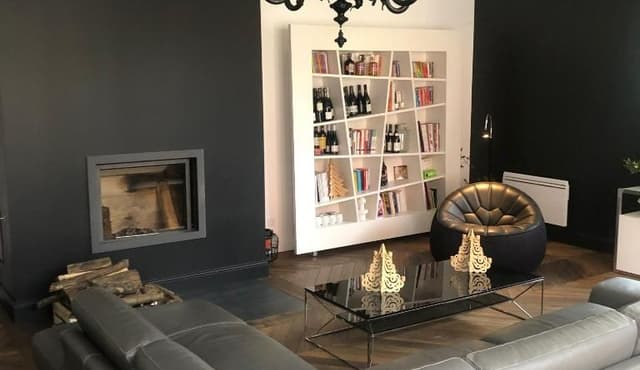
🍽️ Dining Near Château de Champs-sur-Marne:
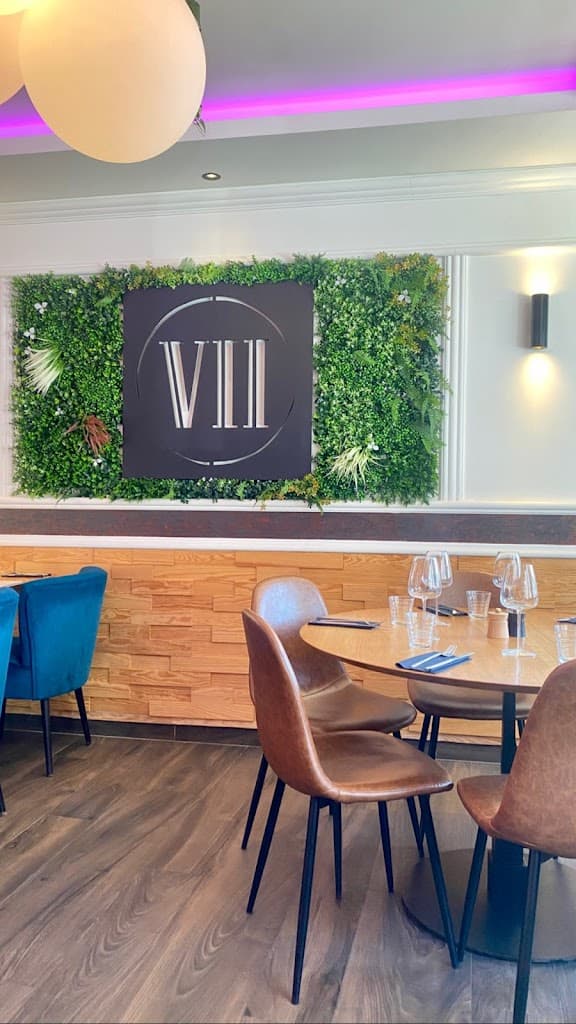
12. Maisons-Laffitte Castle
Saving Castles Regal Ranking 6/10 👑
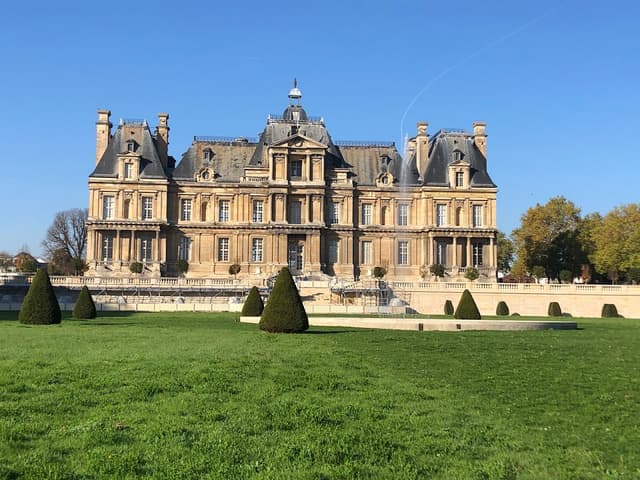
📜 Maisons-Laffitte Castle's History:
Maisons-Laffitte Castle, also known as Château de Maisons, is an architectural masterpiece located in the northwestern suburbs of Paris. Built between 1630 and 1651, it is considered one of the finest examples of French Baroque architecture and a precursor to the grandeur of Versailles.
The château was designed by François Mansart, one of the most influential architects of 17th-century France, for René de Longueil, a wealthy financier. Its design showcases perfect symmetry, harmonious proportions, and innovative features that would later become hallmarks of French classical architecture. The exterior is notable for its elegant stone façade, imposing central pavilion, and distinctive high roof with dormer windows.
Inside, the castle boasts lavishly decorated rooms, including the impressive Grand Salon with its ornate ceiling paintings and the unique oval salon. The château's interiors feature exquisite woodwork, sculptures, and period furnishings that reflect the refined tastes of the French nobility. Today, Maisons-Laffitte Castle is open to the public as a national monument, offering visitors a glimpse into the luxury of 17th-century French aristocratic life and the evolution of French architectural style. Its influence on later château designs, including Versailles, makes it a significant site for those interested in architectural history.
🎫 Recommended Tickets & Tours:
🛏️ Lodging Near Maisons-Laffitte Castle:
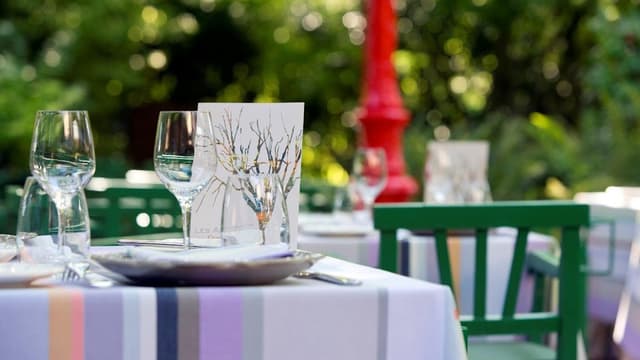
🍽️ Dining Near Maisons-Laffitte Castle:
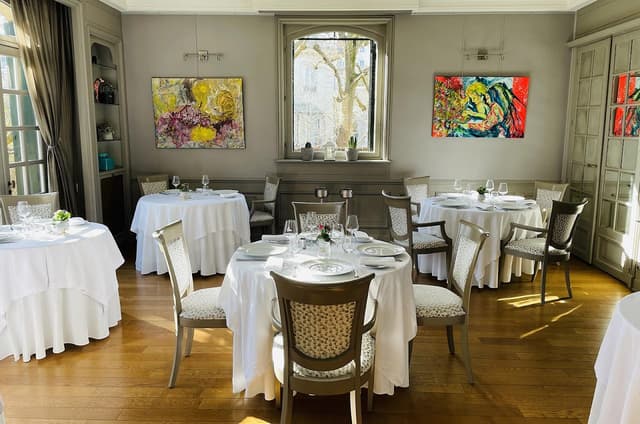
13. Château d'Auvers
Saving Castles Regal Ranking 5/10 👑
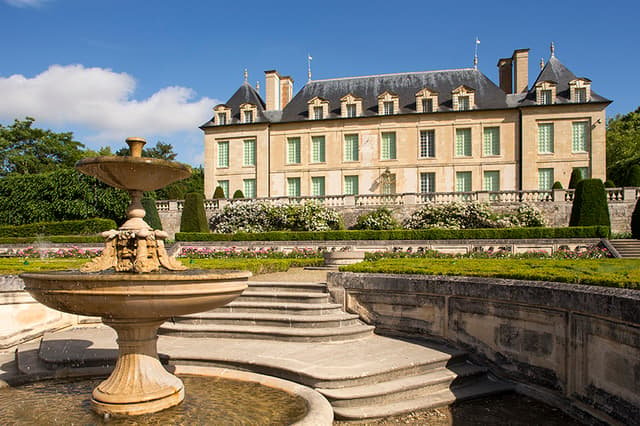
📜 Château d'Auvers's History:
Château d'Auvers, located in the town of Auvers-sur-Oise about 27 kilometers northwest of Paris, is a 17th-century château with a unique connection to Impressionist art. Built in the Louis XIII style, the château itself is a fine example of 17th-century French architecture.
The château is most famous for its association with the Impressionist movement, particularly Vincent van Gogh, who spent the last months of his life in Auvers-sur-Oise. While Van Gogh never lived in the château itself, the town and its surroundings were the subjects of many of his final paintings.
Today, Château d'Auvers houses an immersive multimedia exhibition called "Voyage au Temps des Impressionnistes" (Journey to the Time of the Impressionists). This innovative experience uses sound, light, and projections to transport visitors into the world of Impressionist painters, showcasing the artistic movement that flourished in the area. The château's gardens have been redesigned to reflect themes from Impressionist paintings, creating a harmonious blend of art, nature, and history. This unique approach makes Château d'Auvers a distinctive destination for art lovers and those interested in experiencing the atmosphere that inspired some of the world's most famous painters.
🎫 Recommended Tickets & Tours:
🛏️ Lodging Near Château d'Auvers:
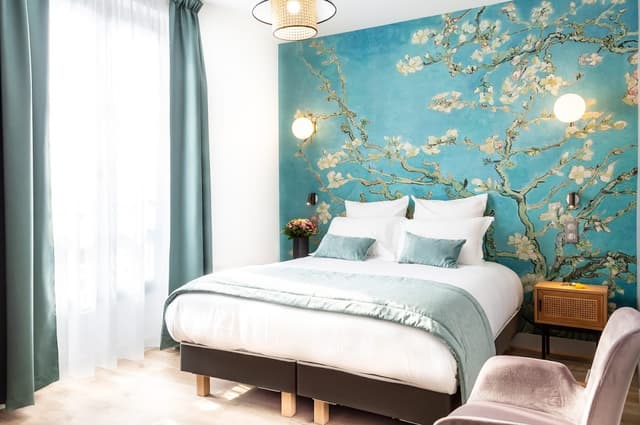
🍽️ Dining Near Château d'Auvers:
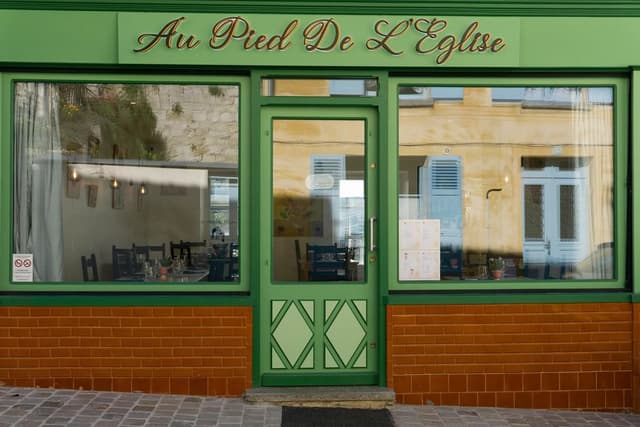
Normandy:
14. Château d'Anet
Saving Castles Regal Ranking 6/10 👑
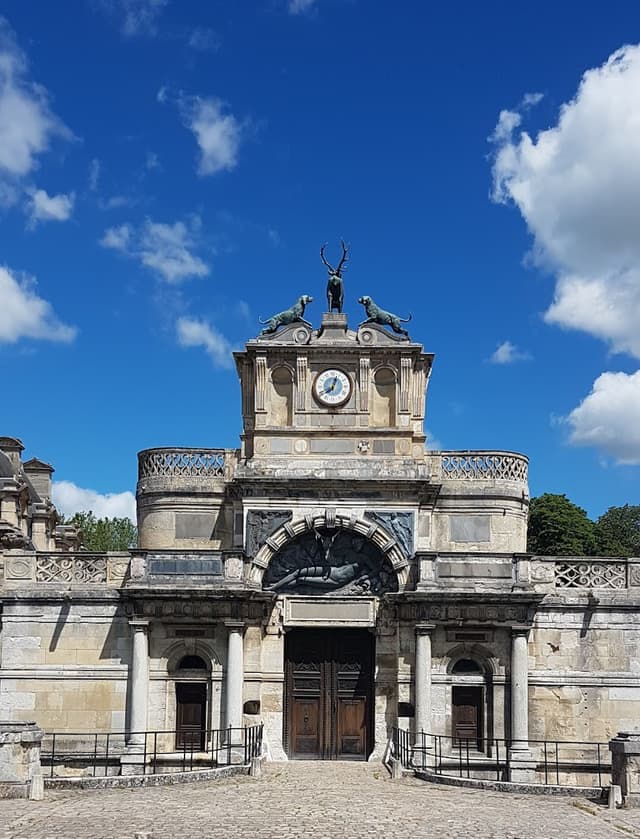
📜 Château d'Anet's History:
Château d'Anet, located in the Eure-et-Loir department about 80 kilometers west of Paris, is a magnificent example of French Renaissance architecture. Built between 1547 and 1552, it was commissioned by Henry II of France for his mistress, Diane de Poitiers.
The château was designed by Philibert de l'Orme, one of the greatest architects of the French Renaissance. Its most striking feature is the central entrance pavilion, crowned with an elegant dome and featuring a famous sculptural group of Diane de Poitiers as the goddess Diana. The château originally had four wings surrounding a courtyard, though only three remain today.
Château d'Anet is renowned for its architectural innovations and decorative elements. These include the first French-style dome, intricate carved reliefs, and a chapel with a remarkable carved portal. The interior, though much altered over time, still contains elements of its Renaissance splendor, including ornate fireplaces and period furnishings. Today, while privately owned, parts of the château and its grounds are open to visitors, offering a glimpse into the refined aesthetics of the French Renaissance and the romantic history of one of France's most famous royal mistresses.
🎫 Recommended Tickets & Tours:
🛏️ Lodging Near Château d'Anet:
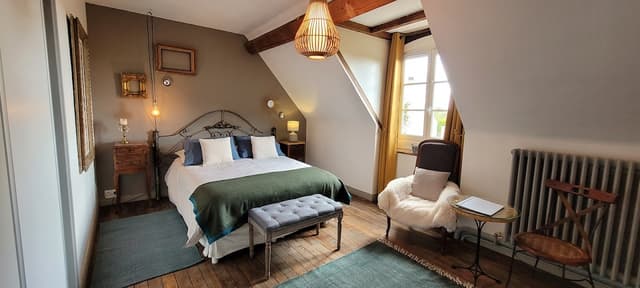
🍽️ Dining Near Château d'Anet:
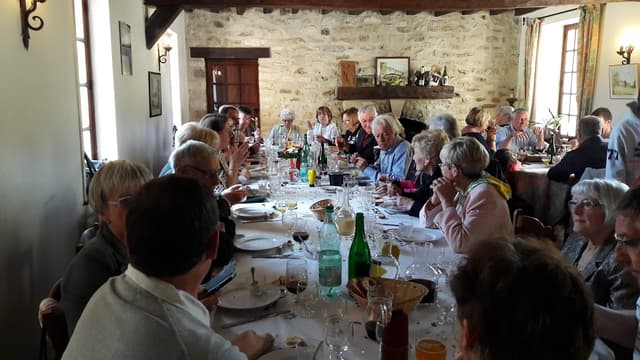
15. Château de La Roche-Guyon
Saving Castles Regal Ranking 7/10 👑
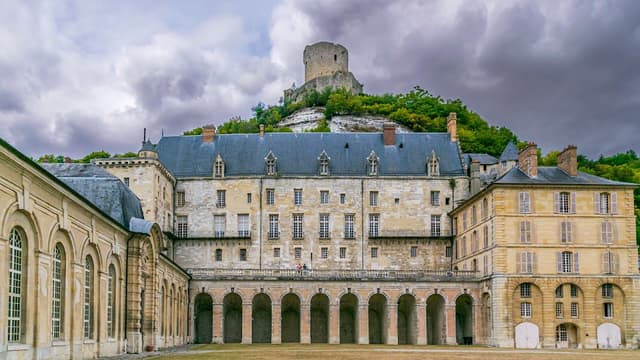
📜 Château de La Roche-Guyon's History:
The Castle of La Roche-Guyon, located in the Val-d'Oise department about 60 kilometers northwest of Paris, is a unique and fascinating example of French castle architecture that spans several centuries.Originally built in the 12th century, the castle began as a medieval fortress carved directly into the chalk cliff overlooking the Seine River. Its most distinctive feature is the donjon (keep) that rises from the top of the cliff, connected to the lower château by a long, steep staircase cut through the rock.
Over the centuries, the castle evolved from a defensive stronghold to a comfortable residence. In the 18th century, the Duke of La Rochefoucauld transformed the lower part into an elegant château in the classical French style, with formal gardens designed by André Le Nôtre. During World War II, the castle served as the headquarters for Field Marshal Erwin Rommel.
Today, visitors can explore both the medieval and classical parts of the castle, including the rock-cut chambers, the 18th-century salons, and the vegetable garden recreated in the spirit of the Age of Enlightenment. The Castle of La Roche-Guyon offers a unique journey through French history, from the Middle Ages to the 20th century, set against the backdrop of the picturesque Seine Valley.
🎫 Recommended Tickets & Tours:
🛏️ Lodging Near Château de La Roche-Guyon:
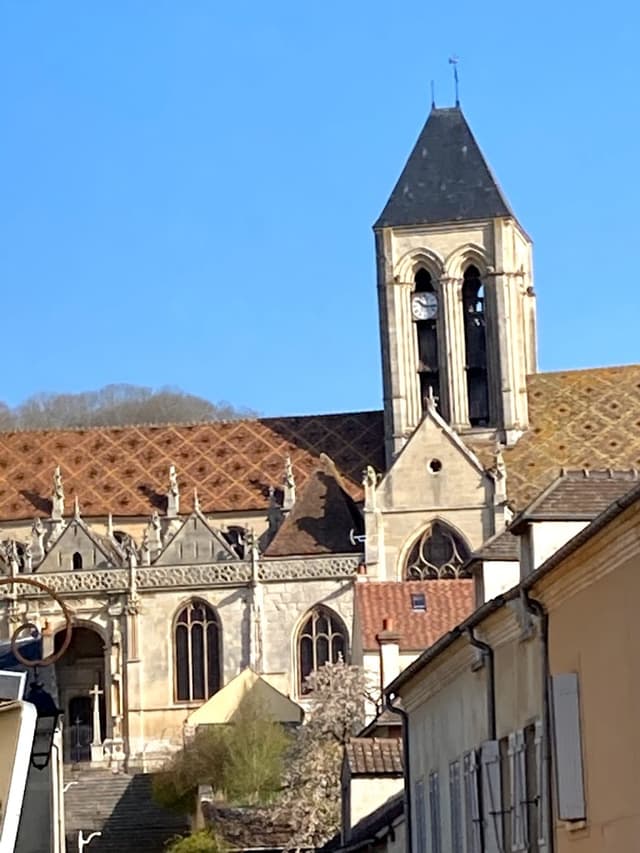
🍽️ Dining Near Château de La Roche-Guyon:
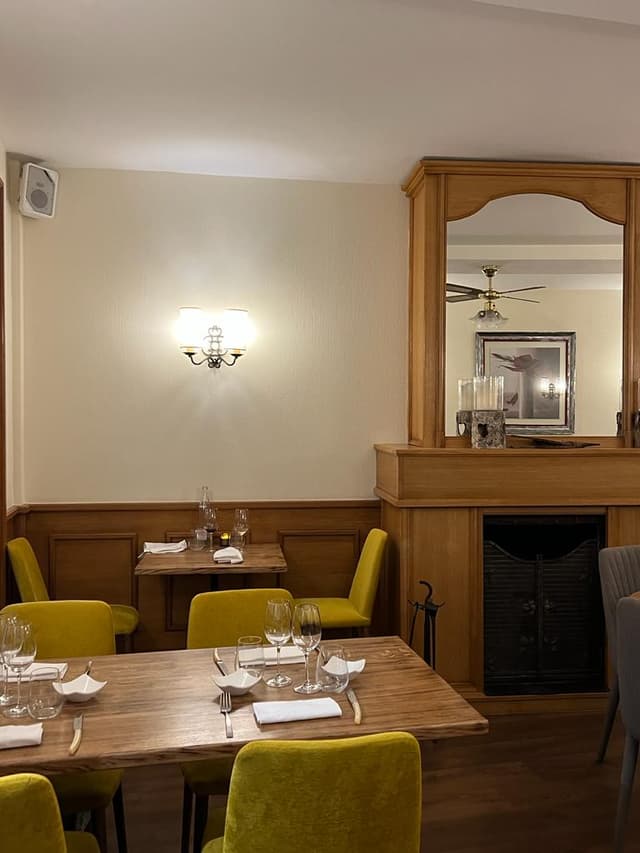
16. Château Gaillard
Saving Castles Regal Ranking 8/10 👑
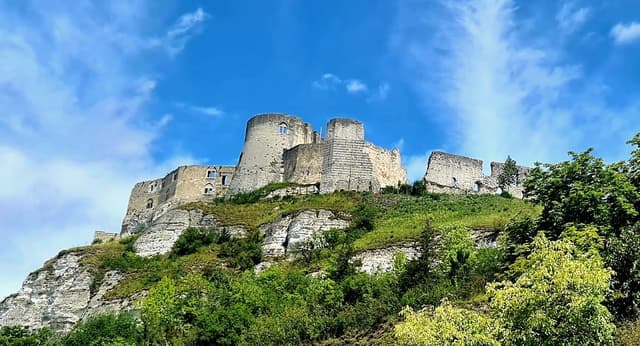
📜 Château Gaillard's History:
Château Gaillard, located in Les Andelys, Normandy, is a ruined medieval castle built by Richard the Lionheart, King of England and Duke of Normandy, in 1196-1198. It stands as one of the finest examples of early Gothic military architecture.
The castle's most striking feature is its advanced defensive design, which was revolutionary for its time. It includes a series of concentric defenses, with each wall higher than the one in front, and an innovative keep with a unique design. The castle's position atop a steep cliff overlooking the Seine River added to its formidable defenses.
Despite its strong fortifications, Château Gaillard fell to the French king Philip II Augustus in 1204, just five years after its completion. This marked a significant turning point in the struggle between England and France for control of Normandy. Today, the ruins of Château Gaillard offer visitors a glimpse into medieval military architecture and the turbulent history of Anglo-French relations. The site provides panoramic views of the Seine Valley and stands as a powerful symbol of the strategic importance of the region during the Middle Ages.
🎫 Recommended Tickets & Tours:
🛏️ Lodging Near Château Gaillard:
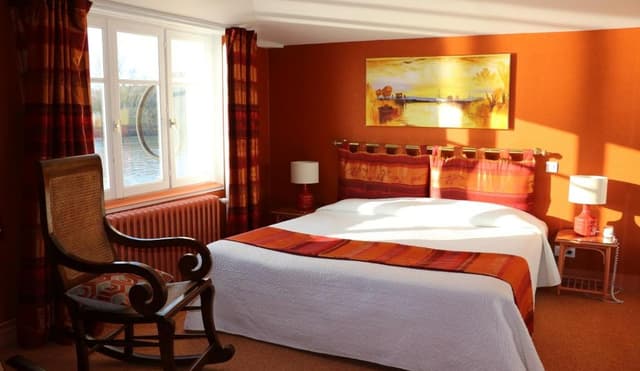
🍽️ Dining Near Château Gaillard:
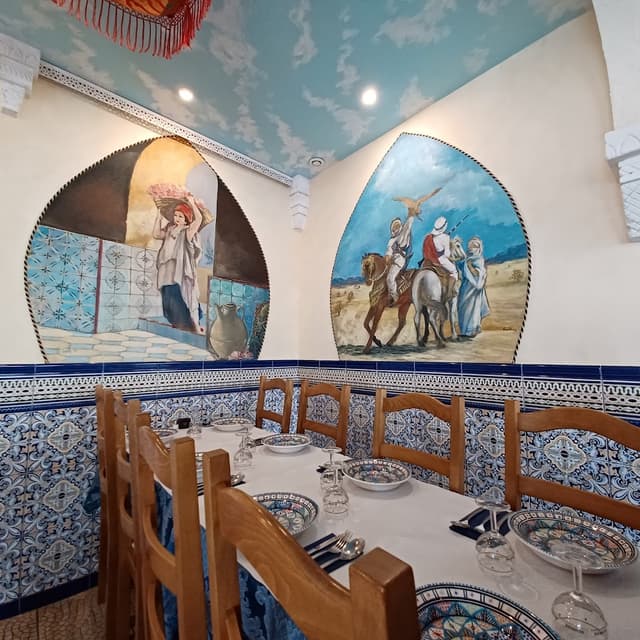
17. Château de Gaillon
Saving Castles Regal Ranking 8/10 👑
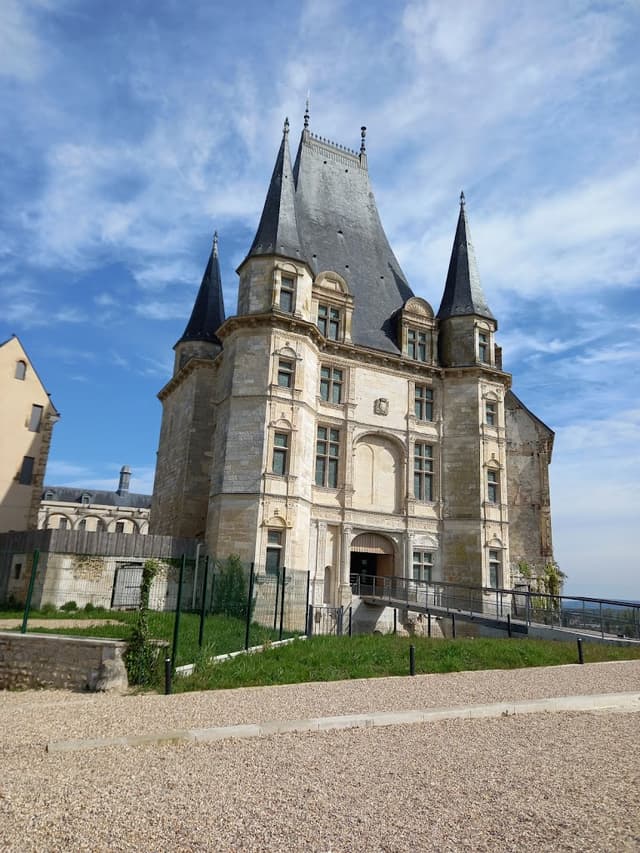
📜 Château de Gaillon's History:
Château de Gaillon, located in the Eure department of Normandy, France, is a significant example of early French Renaissance architecture. Built between 1502 and 1510 for Cardinal Georges d'Amboise, the Archbishop of Rouen and chief minister to King Louis XII, it was one of the first Renaissance-style châteaux in France.
The château's architecture marked a transition from medieval fortified castles to more ornate and comfortable Renaissance palaces. It featured innovative elements for its time, including large windows, ornate decorations, and a harmonious blend of Italian Renaissance and French Gothic styles. The castle was renowned for its beautiful gardens, which were among the earliest formal gardens in France.
Unfortunately, much of the original château was dismantled during the French Revolution. However, significant restoration efforts have been undertaken since the late 20th century. Today, visitors can see parts of the original structure, including the impressive Renaissance gate, and learn about the château's important place in French architectural history. The site now houses a prison, but portions are open to the public, offering insights into the early development of Renaissance architecture in France and the lavish lifestyle of the French clergy and nobility in the early 16th century.
🎫 Recommended Tickets & Tours:
🛏️ Lodging Near Château de Gaillon:
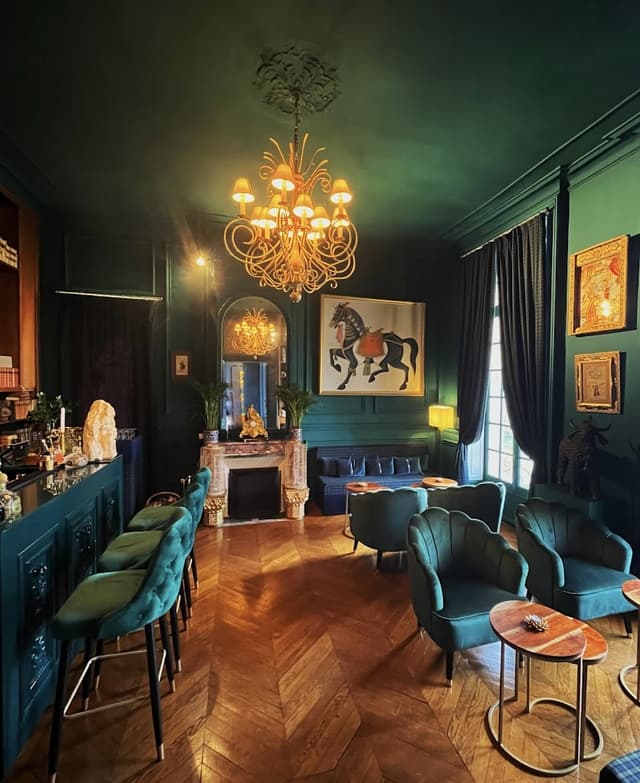
🍽️ Dining Near Château de Gaillon:
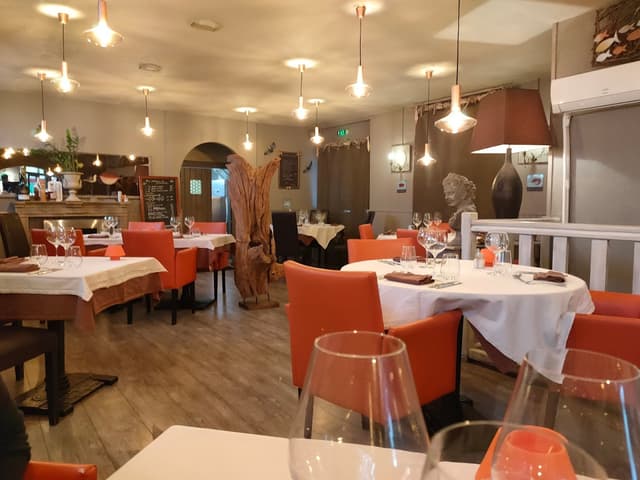
18. Château d'Ô
Saving Castles Regal Ranking 6/10 👑
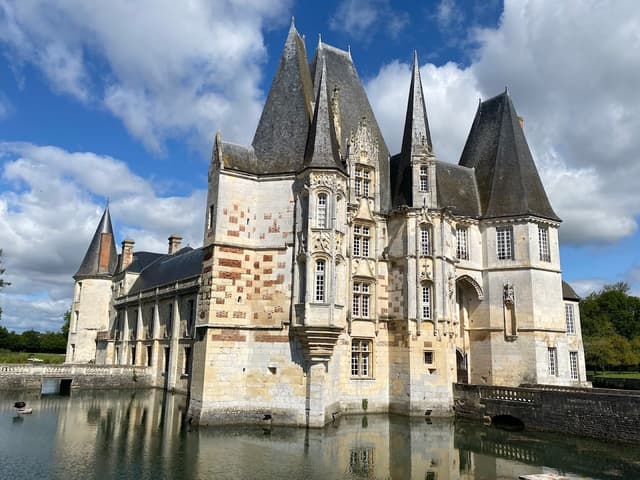
📜 Château d'Ô's History:
Château d'Ô, located in the commune of Mortrée in Normandy, France, is a picturesque Renaissance castle with a rich history. Built in the 16th century, it stands as an excellent example of the transition from medieval fortified castles to more ornate and comfortable Renaissance residences.
The château is notable for its elegant architecture, which combines elements of both Gothic and Renaissance styles. Its most striking features include the ornate façade with large windows, intricate stonework, and a distinctive blend of red brick and white stone, typical of the architectural style of the period. The castle is surrounded by a moat, which adds to its romantic appeal and reflects its origins as a defensive structure.
Today, Château d'Ô is privately owned but is open to the public for guided tours during certain periods of the year. Visitors can explore parts of the interior, which include beautifully preserved rooms showcasing period furnishings and decor. The château's gardens and park, with their formal French design, complement the architecture and provide a serene setting. While less famous than some of France's larger castles, Château d'Ô offers visitors a more intimate glimpse into the Renaissance period and the evolution of French château architecture.
🎫 Recommended Tickets & Tours:
🛏️ Lodging Near Château d'Ô:
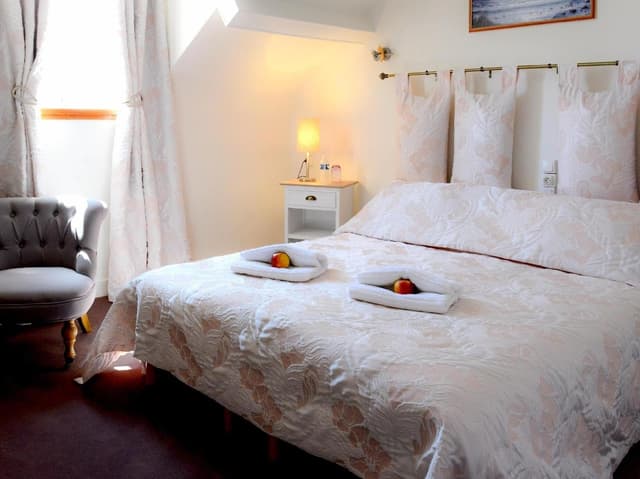
🍽️ Dining Near Château d'Ô:
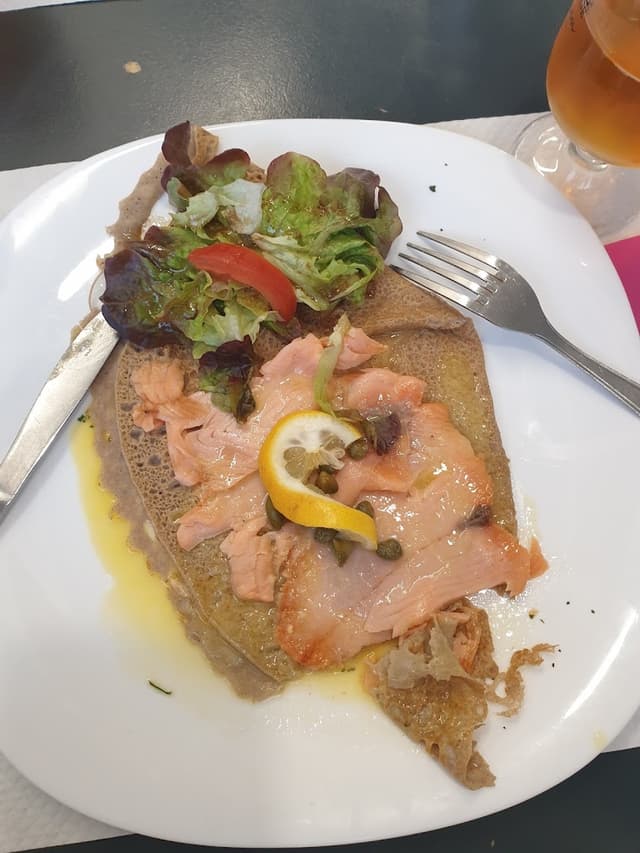
19. Château de Beaumesnil
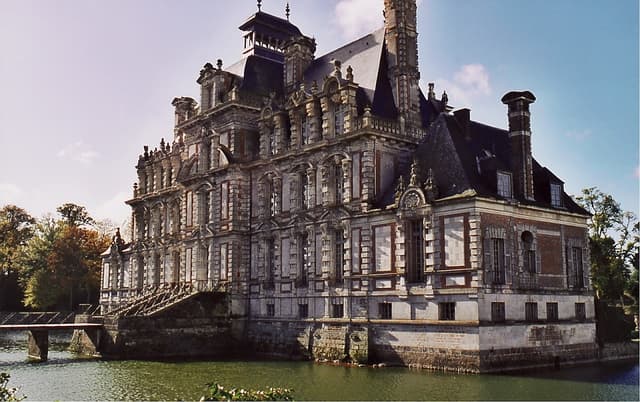
📜 Château de Beaumesnil's History:
Château de Beaumesnil, located in the Eure department of Normandy, France, is often referred to as the "Norman Versailles" due to its grandeur and architectural beauty. Built between 1633 and 1640, it is a prime example of Louis XIII style architecture.
The château was designed by Jean Gallard for Jacques Le Conte, treasurer of the King's buildings. Its most striking features include its perfect symmetry, red brick and stone façade, and high slate roofs typical of the period. The château is surrounded by a moat, which adds to its picturesque appearance and reflects its origins as a noble residence with defensive capabilities.
Inside, the château boasts richly decorated rooms, including a remarkable library with a collection of over 15,000 ancient books. The castle is also known for its beautiful formal French gardens and an English-style park. Today, Château de Beaumesnil is open to the public and houses a museum dedicated to the art of culinary presentation and table setting. Visitors can explore the château's elegant interiors, stroll through its gardens, and even participate in cooking workshops, making it a unique destination that combines architectural beauty with culinary heritage.
🎫 Recommended Tickets & Tours:
🛏️ Lodging Near Château de Beaumesnil:
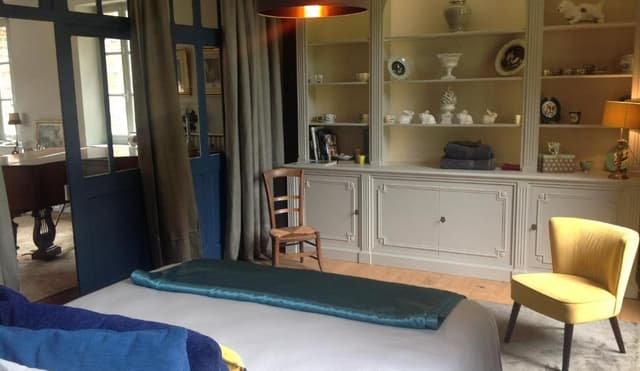
🍽️ Dining Near Château de Beaumesnil:

20. Château d'Harcourt
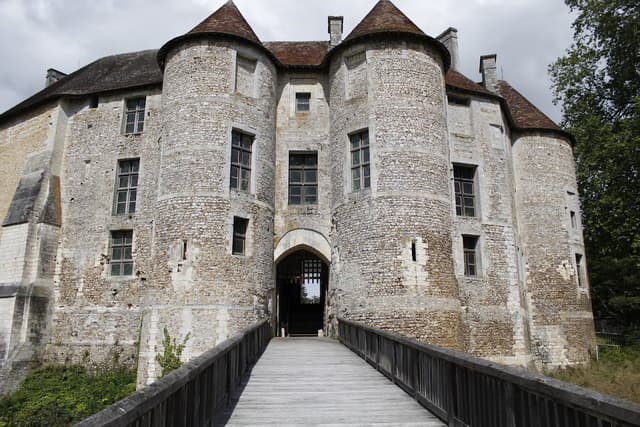
📜 Château d'Harcourt's History:
Château d'Harcourt, located in the Eure department of Normandy, France, is one of the best-preserved medieval castles in the region. Built in the 12th century and modified over subsequent centuries, it offers a fascinating glimpse into the evolution of castle architecture from the Middle Ages to the Renaissance.
The castle's most notable features include its circular keep, which dates from the 12th century, and its impressive fortified entrance with two massive round towers. The château showcases the transition from medieval military architecture to more comfortable residential designs, with later additions including larger windows and more ornate living quarters.
Château d'Harcourt is particularly famous for its arboretum, established in 1802, which is one of the oldest in France. The arboretum contains over 500 species of trees, some of which are several centuries old. Today, the castle is open to the public, offering visitors the opportunity to explore its medieval architecture, learn about its rich history, and enjoy the beautiful surroundings of its historic arboretum. The combination of medieval military architecture, later residential additions, and the renowned arboretum makes Château d'Harcourt a unique attraction that spans centuries of French history and botanical science.
🎫 Recommended Tickets & Tours:
🛏️ Lodging Near Château d'Harcourt:
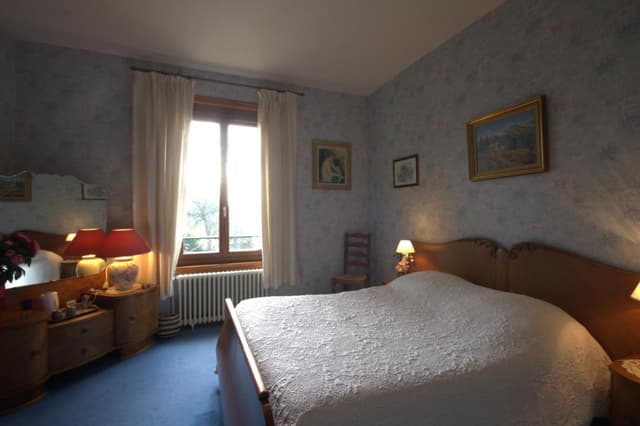
🍽️ Dining Near Château d'Harcourt:
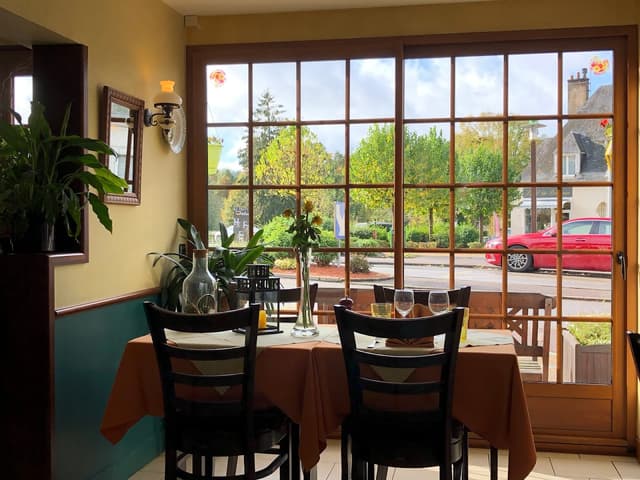
21. Castle Martainville
Saving Castles Regal Ranking 6/10 👑
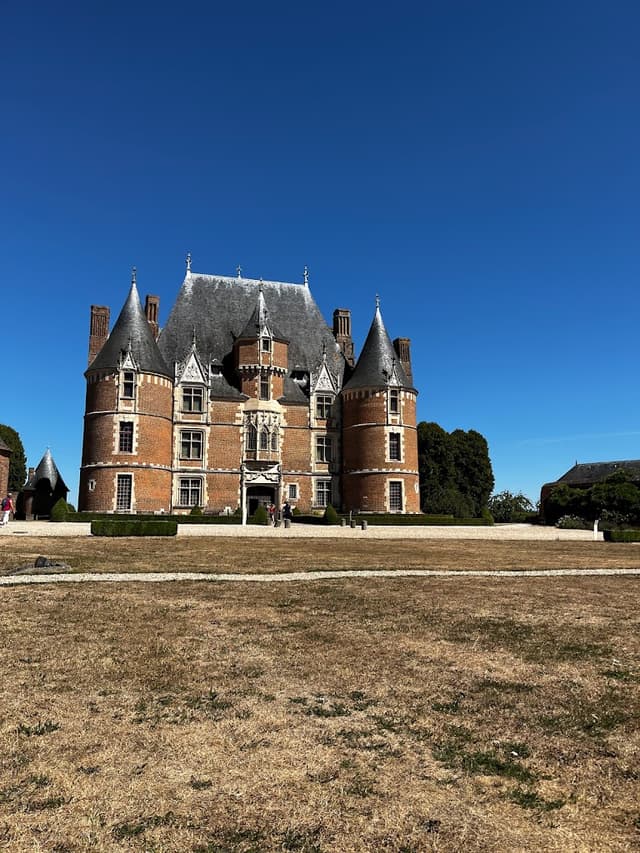
📜 Castle Martainville's History:
Château de Martainville, located in the Seine-Maritime department of Normandy, France, is a picturesque example of late 15th-century architecture. Built in 1485 by Jacques Le Pelletier, a wealthy shipowner and financier, it represents the transition from medieval fortified castles to more comfortable Renaissance residences.
The château's most striking feature is its distinctive architecture, which combines elements of both defensive medieval design and early Renaissance elegance. It features four round towers at each corner, reminiscent of earlier fortified castles, but also incorporates large windows and more ornate decorations typical of the Renaissance period. The red brick and white stone construction creates a visually appealing contrast characteristic of the architectural style of the time.
Today, Château de Martainville houses the Museum of Norman Arts and Traditions. Visitors can explore rooms furnished in the style of the 15th to 19th centuries, providing insight into the evolution of Norman interior design and daily life. The museum also showcases an impressive collection of Norman furniture, textiles, and traditional costumes. The combination of the château's architectural beauty and its role as a museum of regional culture makes it a valuable destination for those interested in Norman history and heritage.
🎫 Recommended Tickets & Tours:
🛏️ Lodging Near Castle Martainville:
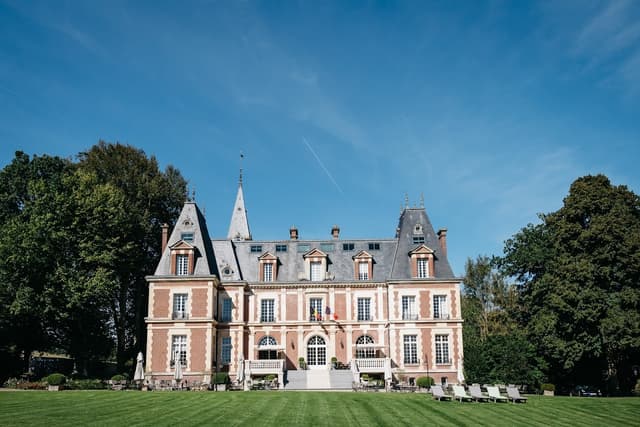
🍽️ Dining Near Castle Martainville:
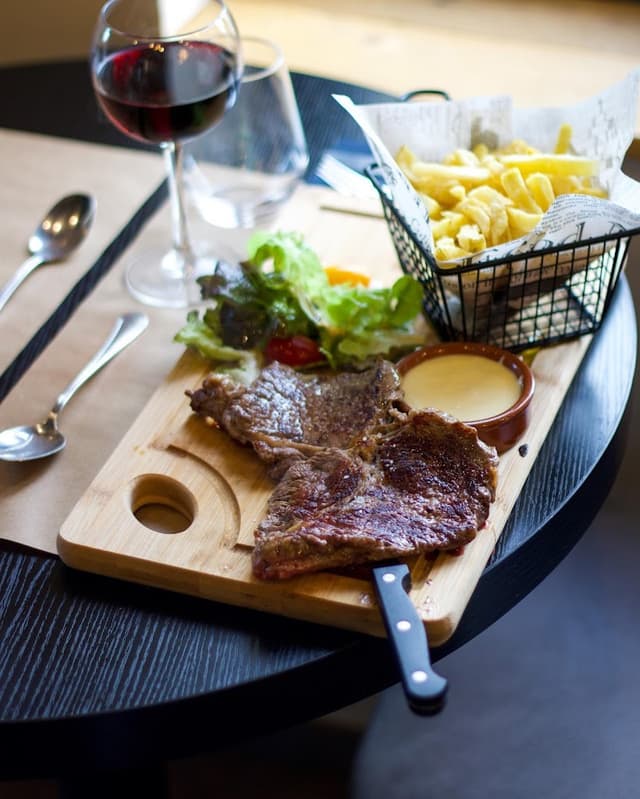
22. Balleroy Castle
Saving Castles Regal Ranking 7/10 👑
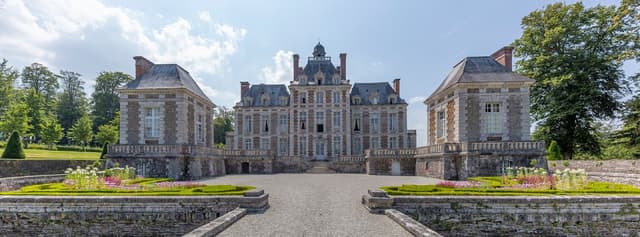
📜 Balleroy Castle's History:
Château de Balleroy, located in the Calvados department of Normandy, France, is a remarkable example of 17th-century French classical architecture. Built between 1626 and 1636 for Jean de Choisy, a counselor to King Louis XIII, it was designed by François Mansart, one of the most influential architects of the period.
The château is notable for its symmetrical design and elegant proportions, which were innovative for its time and helped establish the French classical style. Its façade features a central pavilion flanked by two wings, creating a harmonious and balanced appearance. The use of brick and stone, typical of the Louis XIII style, adds to its visual appeal.
Balleroy Castle is also famous for its connection to the Forbes family. Malcolm Forbes, the American publishing magnate, purchased and restored the château in the 1970s, establishing it as a museum dedicated to hot air ballooning. Today, while the balloon museum has closed, the château continues to be open to the public. Visitors can explore the beautifully preserved interiors, which showcase period furnishings and decor. The surrounding park and formal gardens, designed in the French style, complement the château's architecture. Château de Balleroy stands as an important example of early French classical architecture and offers insights into both 17th-century French nobility and 20th-century American patronage of European heritage.
🎫 Recommended Tickets & Tours:
🛏️ Lodging Near Balleroy Castle:
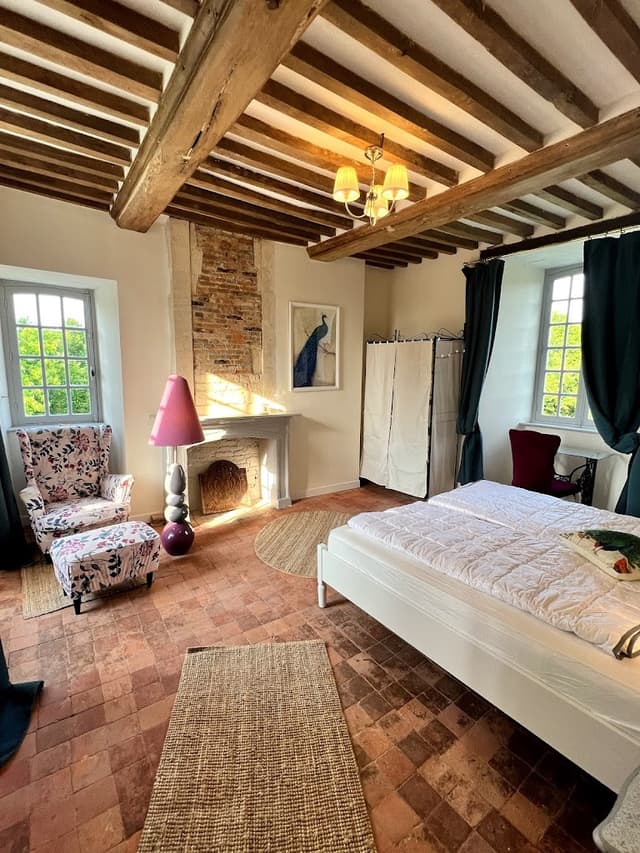
🍽️ Dining Near Balleroy Castle:
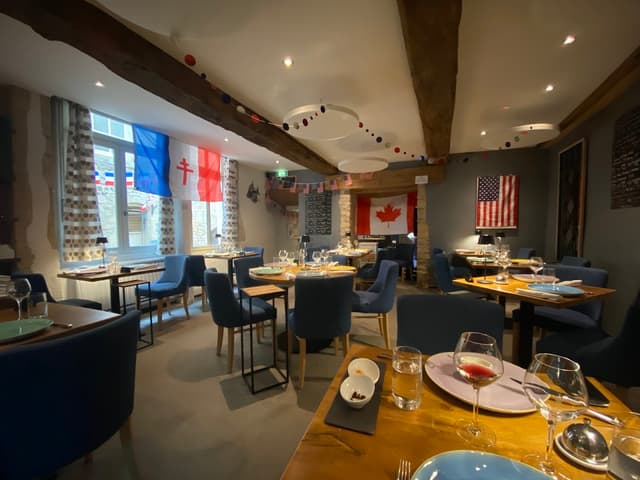
23. Caen Castle
Saving Castles Regal Ranking 8/10 👑
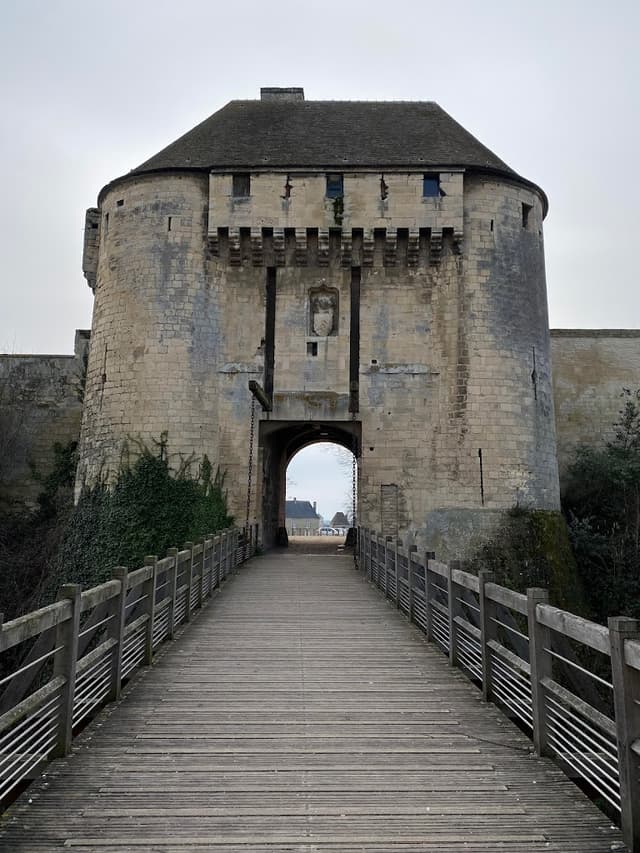
📜 Caen Castle's History:
Caen Castle, also known as Château de Caen, is a major medieval fortress located in the city of Caen, Normandy, France. Built around 1060 by William the Conqueror, Duke of Normandy and later King of England, it stands as one of the largest medieval fortresses in Europe.
The castle's most striking features are its massive stone walls and ramparts, which encircle an area of 5.5 hectares. It includes several notable structures within its grounds, including the Church of St. George, the Exchequer Hall, and the Keep, though only the base of the original keep remains today. The fortress played a significant role in various conflicts, including the Hundred Years' War and the Wars of Religion.
Today, Caen Castle houses two important museums: the Museum of Normandy and the Museum of Fine Arts. The Museum of Normandy showcases the region's rich history and culture, while the Museum of Fine Arts contains an impressive collection of European paintings. The castle's grounds offer panoramic views of Caen and serve as a public park. As a testament to its historical significance and architectural grandeur, Caen Castle continues to be a major tourist attraction, offering visitors a journey through nearly a millennium of Norman and French history.
🎫 Recommended Tickets & Tours:
🛏️ Lodging Near Caen Castle:
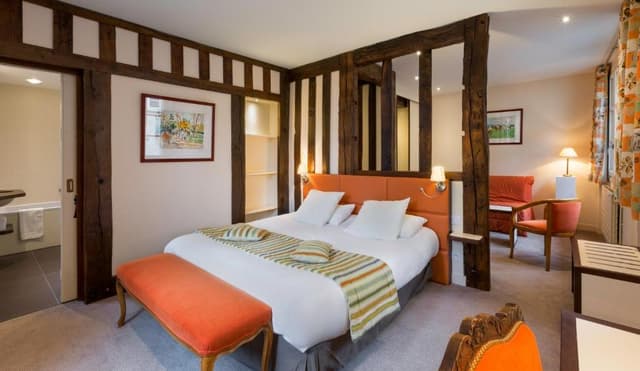
🍽️ Dining Near Caen Castle:
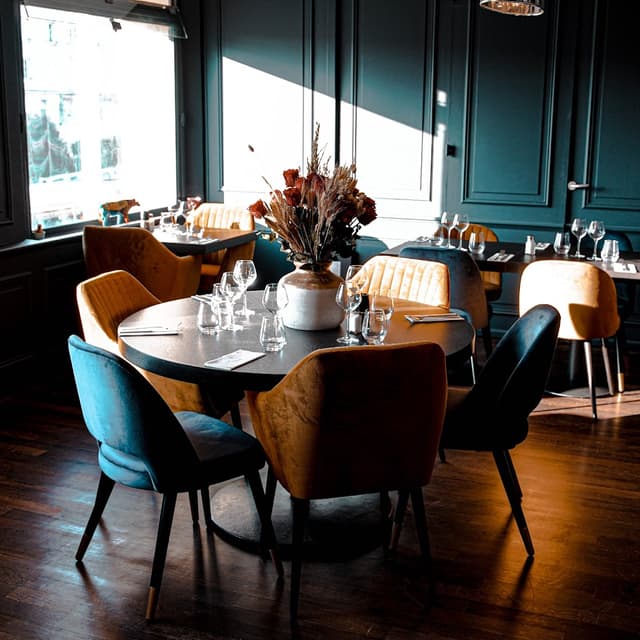
24. Château de Carrouges
Saving Castles Regal Ranking 7/10 👑
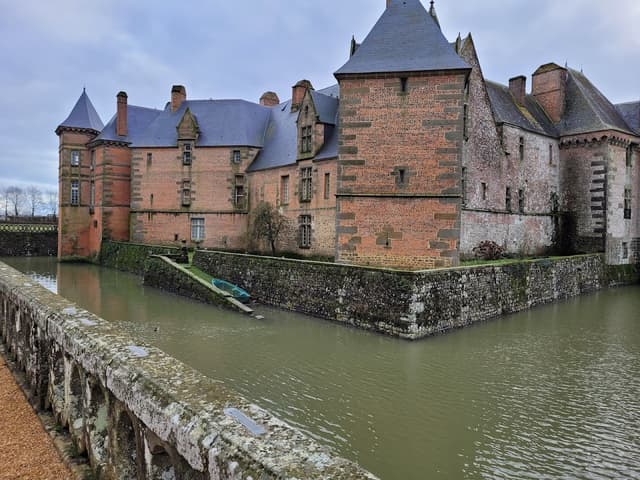
📜 Château de Carrouges' History:
Château de Carrouges, located in the Orne department of Normandy, France, is a striking example of medieval and Renaissance architecture. Built between the 14th and 16th centuries, it showcases the evolution of castle design from a defensive fortress to a comfortable noble residence.
The château's most distinctive feature is its red brick façade, which contrasts beautifully with the gray slate roofs and the surrounding green landscape. This use of brick is unusual for the region and gives the castle a unique appearance. The structure combines elements of medieval military architecture, such as its fortified entrance and corner towers, with more refined Renaissance features like large windows and ornate chimneys.
Inside, visitors can explore a series of richly furnished rooms that span several centuries of French decorative arts. Notable features include the grand staircase, the Guards' Room with its impressive fireplace, and the birth room of Charlotte Corday, the famous French Revolutionary figure. The château is surrounded by formal gardens and a park, which add to its picturesque setting. Today, Château de Carrouges is managed by the Centre des Monuments Nationaux and is open to the public, offering a fascinating glimpse into the life of the French nobility from the Middle Ages to the 19th century.
🎫 Recommended Tickets & Tours:
🛏️ Lodging Near Château de Carrouges:
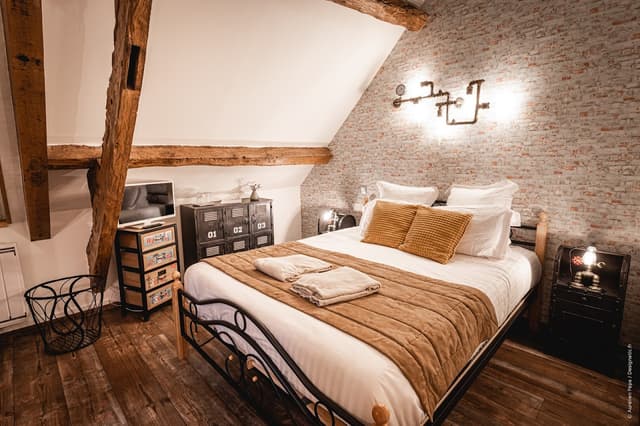
🍽️ Dining Near Château de Carrouges:
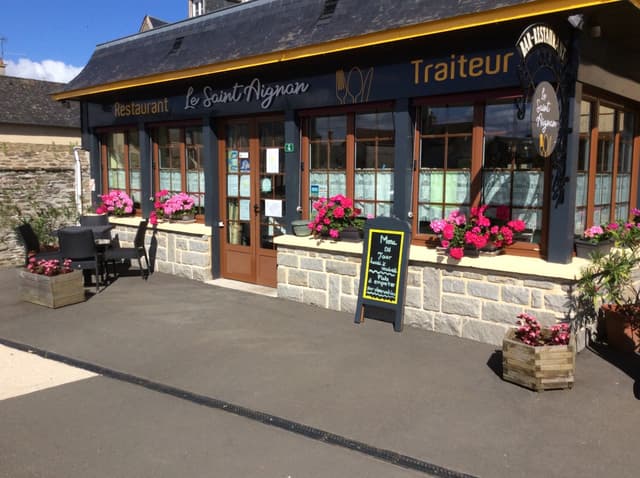
25. Château de Crèvecœur
Saving Castles Regal Ranking 7/10 👑
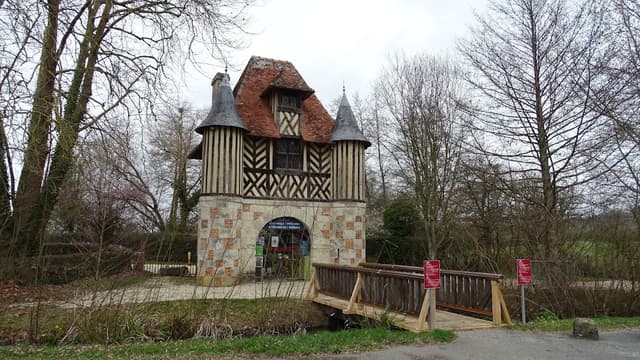
📜 Château de Crèvecœur's History:
Château de Crèvecœur, located in the Calvados department of Normandy, France, is a well-preserved example of a medieval lord's manor. Dating back to the 11th century, it offers visitors a vivid glimpse into life in medieval Normandy.
The château is notable for its authentic medieval architecture, including a fortified gatehouse, a half-timbered manor house, and a 15th-century chapel. The site is surrounded by a moat, which adds to its defensive character and picturesque appearance. One of the most interesting features is the dovecote, a round stone building that could house up to 3,000 pigeons, symbolizing the lord's status and providing a source of food and fertilizer.
Today, the château is owned by the Schlumberger Foundation and operates as a museum dedicated to rural life in medieval Normandy. Visitors can explore the various buildings, each showcasing different aspects of medieval daily life, crafts, and agriculture. The site often hosts historical reenactments and educational programs, bringing the medieval period to life. The combination of well-preserved medieval architecture and interactive historical presentations makes Château de Crèvecœur a unique and engaging destination for those interested in medieval history and Norman heritage.
🎫 Recommended Tickets & Tours:
🛏️ Lodging Near Château de Crèvecœur:
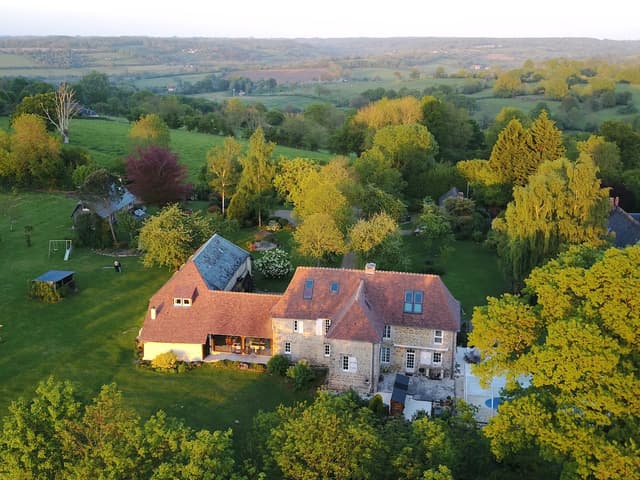
🍽️ Dining Near Château de Crèvecœur:
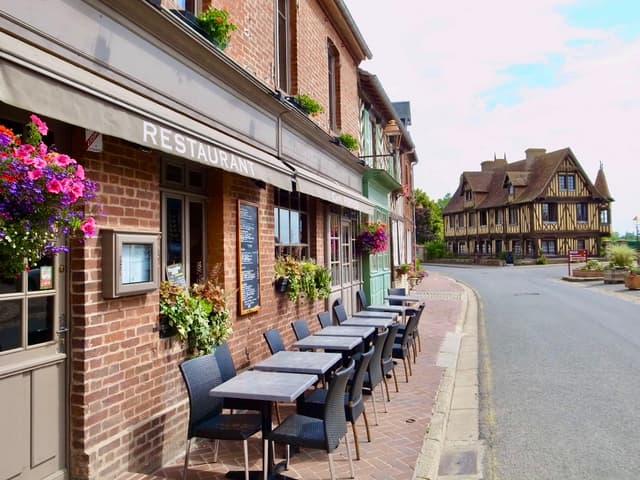
Hauts-de-France
26. Château de Chantilly
Saving Castles Regal Ranking 9/10 👑
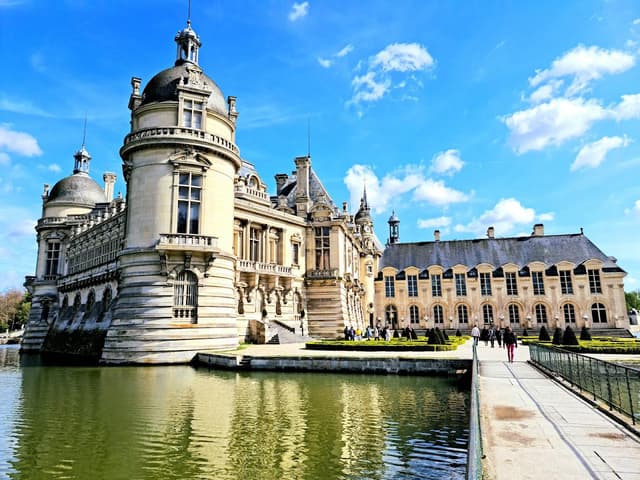
📜 Château de Chantilly's History:
Château de Chantilly, located about 50 kilometers north of Paris, is one of the finest jewels of French cultural heritage. Built in the 16th century and reconstructed in the 19th century, it exemplifies both Renaissance and 19th-century French architecture.
The château is renowned for housing the Musée Condé, which boasts the second largest collection of antique paintings in France after the Louvre. Its library contains over 60,000 volumes, including many rare manuscripts. The château's interiors are lavishly decorated, featuring ornate rooms like the Grands Appartements and the stunning Gallery of Battles.
Surrounding the château are magnificent French-style gardens designed by André Le Nôtre, the landscape architect of Versailles. These include the Grand Canal, parterres, and water features. The estate also includes the Great Stables, an impressive 18th-century building that now houses the Living Museum of the Horse. Chantilly is famous for its equestrian traditions, hosting prestigious horse races and dressage events. The combination of architectural grandeur, art collections, beautiful gardens, and equestrian heritage makes Château de Chantilly a multifaceted cultural landmark.
🎫 Recommended Tickets & Tours:
🛏️ Lodging Near Château de Chantilly:
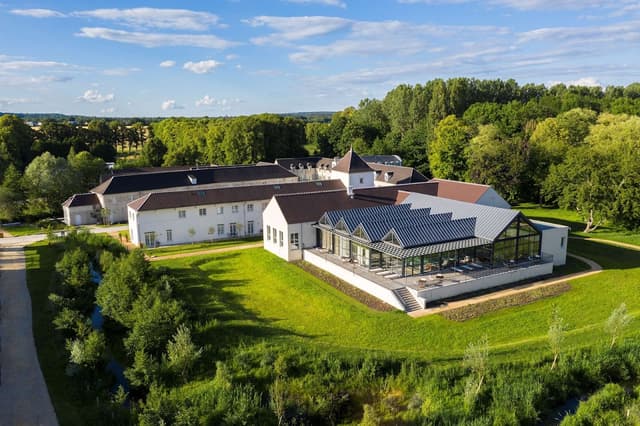
🍽️ Dining Near Château de Chantilly:
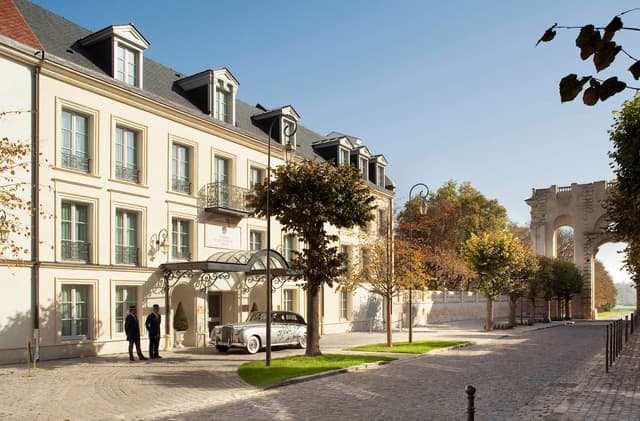
27. Château de Pierrefonds
Saving Castles Regal Ranking 8/10 👑
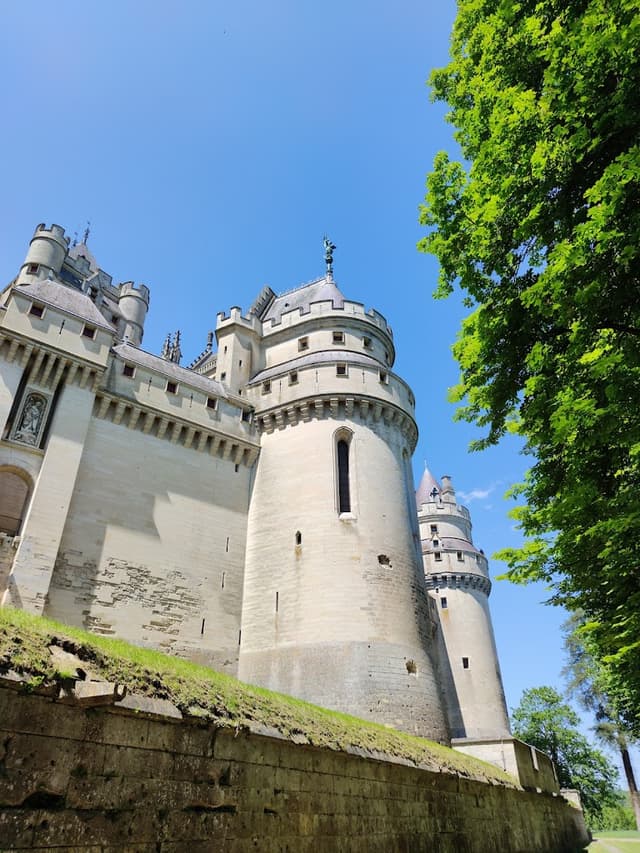
📜 Château de Pierrefonds' History:
Château de Pierrefonds, located in the Oise department of northern France, is a spectacular example of medieval military architecture, albeit with a significant 19th-century restoration twist.
Originally built in the late 14th century by Duke Louis of Orléans, the castle was one of the most important feudal strongholds in France. It was dismantled in the 17th century on the orders of Cardinal Richelieu but was brought back to life in the 19th century when Emperor Napoleon III commissioned architect Eugène Viollet-le-Duc to restore and reimagine it.
Viollet-le-Duc's restoration is notable for its romanticized interpretation of medieval architecture. The result is a striking blend of authentic medieval elements and 19th-century ideals of what a medieval castle should look like. Features include massive round towers, a drawbridge, machicolations, and richly decorated interiors that mix medieval and Neo-Gothic styles.
Today, Château de Pierrefonds is open to the public as a national monument. Visitors can explore its impressive fortifications, grand halls, and ornate chambers. The castle's dramatic silhouette and picturesque setting have made it a popular filming location, notably appearing in the BBC series "Merlin". Pierrefonds offers a unique opportunity to experience both medieval military architecture and 19th-century romantic interpretations of the Middle Ages, making it a fascinating destination for history and architecture enthusiasts.
🎫 Recommended Tickets & Tours:
🛏️ Lodging Near Château de Pierrefonds:
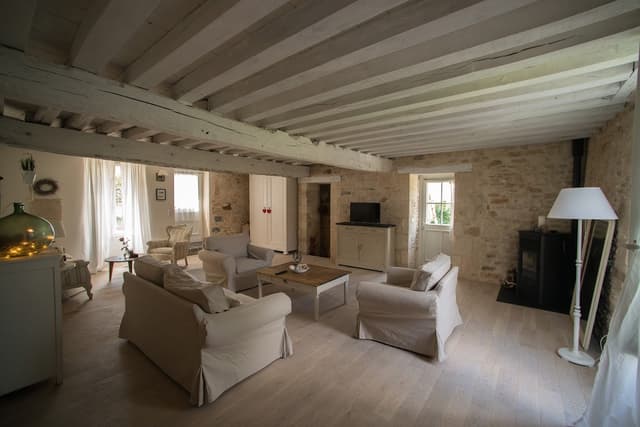
🍽️ Dining Near Château de Pierrefonds:
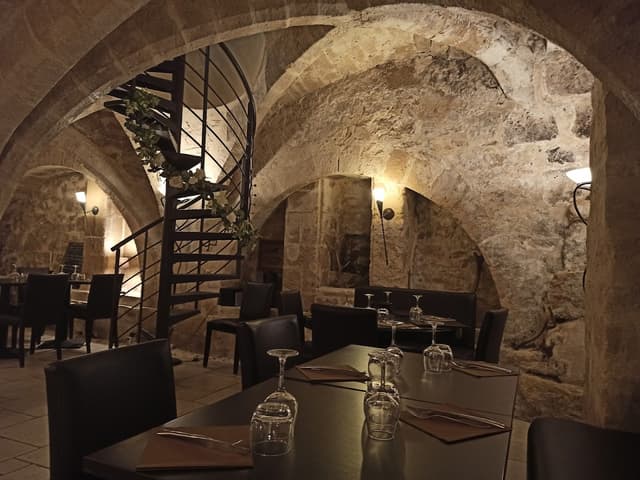
28. Château de Compiègne
Saving Castles Regal Ranking 9/10 👑
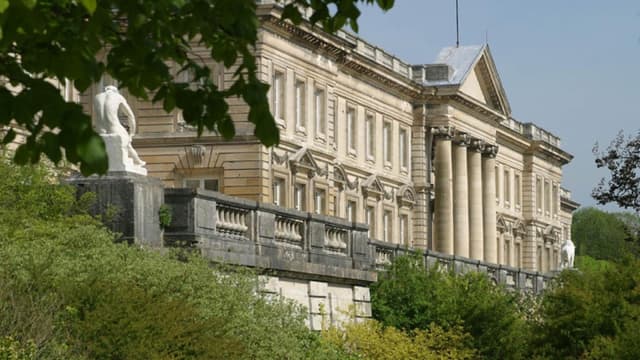
📜 Château de Compiègne's History:
Château de Compiègne, located in the Oise department of northern France, is a significant royal and imperial residence with a rich history spanning from the Middle Ages to the Second Empire.
Built originally in the Middle Ages, the château was entirely reconstructed in the 18th century under Louis XV and Louis XVI. The current neoclassical structure, designed by Ange-Jacques Gabriel and later modified by Louis XVI, reflects the grandeur of French royal architecture. It served as one of three seats of royal government, along with Versailles and Fontainebleau.
The château gained particular importance during the First and Second Empires. Napoleon I made extensive renovations and used it as an imperial residence. Later, Napoleon III and Empress Eugénie made it their preferred autumn residence, hosting lavish "Séries de Compiègne" - weeks of hunting parties and entertainment for the elite of French society.
Today, Château de Compiègne houses three museums: the apartments of the Kings and Emperors, the Museum of the Second Empire, and the National Car Museum. The interior showcases exquisite Empire-style decorations and furnishings. The château is surrounded by beautiful gardens and a vast forest, once used for royal hunts. Its combination of architectural beauty, historical significance, and museum collections make it a noteworthy destination for those interested in French royal and imperial history.
🎫 Recommended Tickets & Tours:
🛏️ Lodging Near Château de Compiègne:
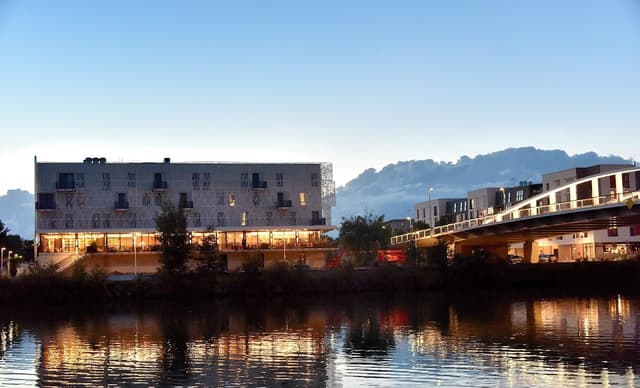
🍽️ Dining Near Château de Compiègne:
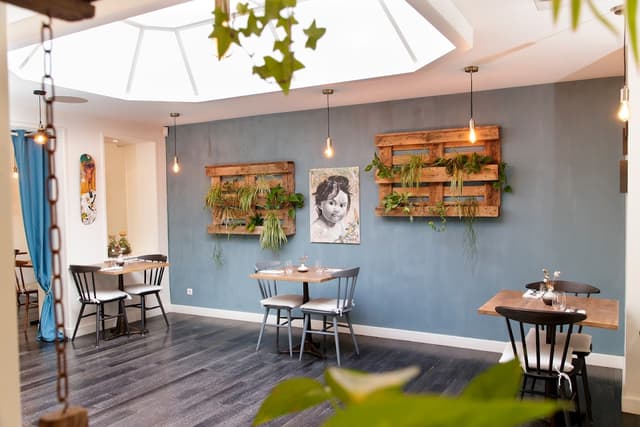
29. Coucy Castle
Saving Castles Regal Ranking 7/10 👑
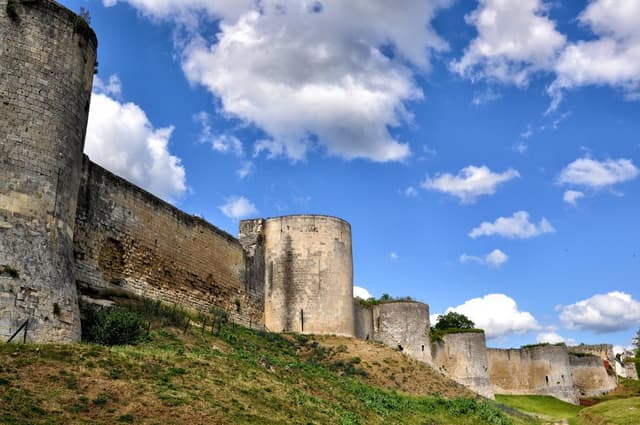
📜 Coucy Castle's History:
Coucy Castle, located in the Aisne department of northern France, was one of the most impressive medieval fortresses in Europe before its destruction in World War I. Built in the 13th century by Enguerrand III de Coucy, it was renowned for its massive size and formidable defenses.
The castle's most striking feature was its enormous keep, which at 54 meters high and 31 meters in diameter, was the largest in Europe. This donjon was a masterpiece of medieval military architecture, symbolizing the power of its feudal lords who adopted the motto: "Roi ne suis, ne prince ne duc ne comte aussi; je suis le sire de Coucy" (I am not a king, nor prince, duke, or count; I am the Lord of Coucy).
Coucy Castle played significant roles in various conflicts, including the Hundred Years' War and the French Wars of Religion. In 1917, the retreating German army dynamited the keep and towers, leaving the castle in ruins. Today, the site is managed by the Centre des Monuments Nationaux. Visitors can explore the extensive ruins, which still convey the castle's former grandeur. The remains offer insights into medieval military architecture and the feudal power structures of medieval France. Despite its ruined state, Coucy Castle continues to be an important historical site, illustrating both medieval might and the destructive impact of modern warfare on historical monuments.
🎫 Recommended Tickets & Tours:
🛏️ Lodging Near Coucy Castle:
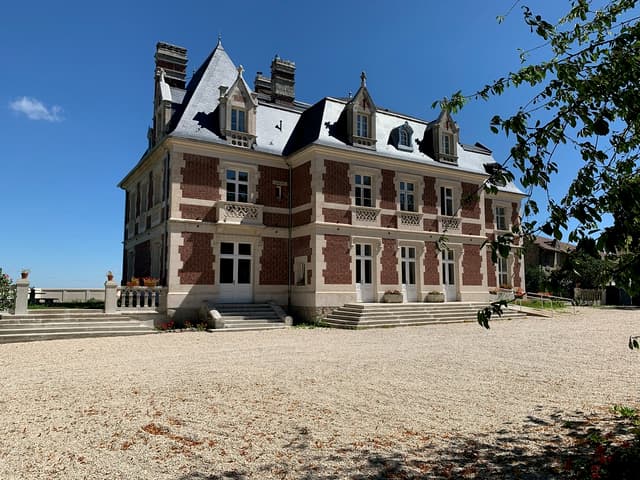
🍽️ Dining Near Coucy Castle:
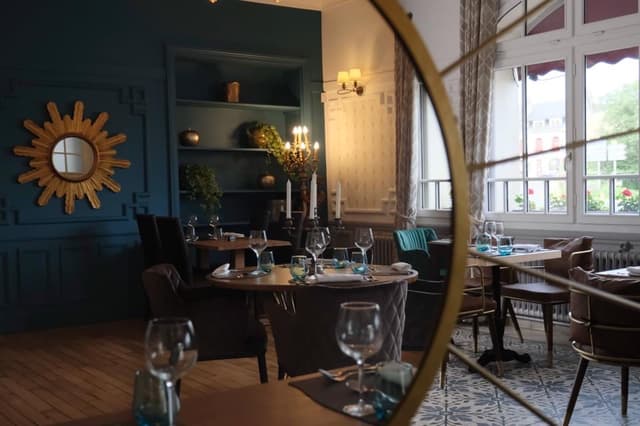
30. Château de Raray
Saving Castles Regal Ranking 6/10 👑
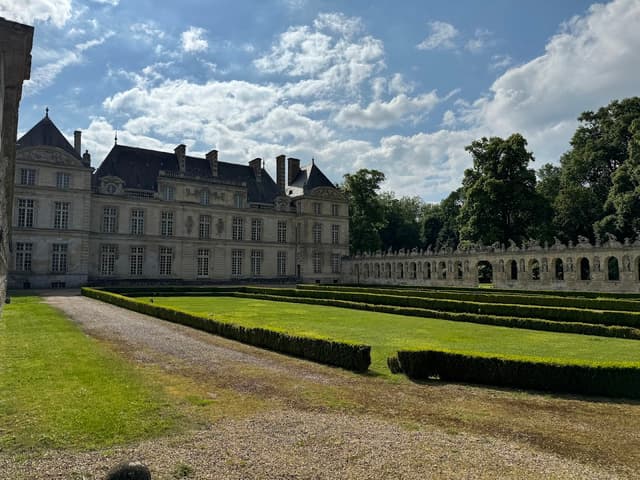
📜 Château de Raray's History:
Château de Raray, located in the Oise department of northern France, is a striking example of 17th-century French classical architecture. Built between 1610 and 1622, the château is known for its elegant design and historical significance.
The château's most notable features are its symmetrical façade, typical of the Louis XIII style, and its two impressive horseshoe-shaped staircases leading to the entrance. These staircases, along with the château's overall architecture, create a harmonious and grand appearance. The building is constructed of brick and stone, a common architectural style of the period in northern France.Château de Raray is perhaps best known for its appearance in Jean Cocteau's 1946 film "La Belle et la Bête" (Beauty and the Beast), where it served as the exterior of the Beast's enchanted castle. This cinematic connection has added to its allure and cultural significance.
Today, while the château itself is not open to the public, its grounds house a prestigious golf course. The estate's hunting grounds, dating back to the 18th century, have been transformed into this golf course, allowing visitors to enjoy the château's exterior and surrounding landscape. The combination of its architectural beauty, cinematic history, and current use as a golf resort makes Château de Raray a unique blend of historical charm and modern leisure.
🎫 Recommended Tickets & Tours:
🛏️ Lodging Near Château de Raray:
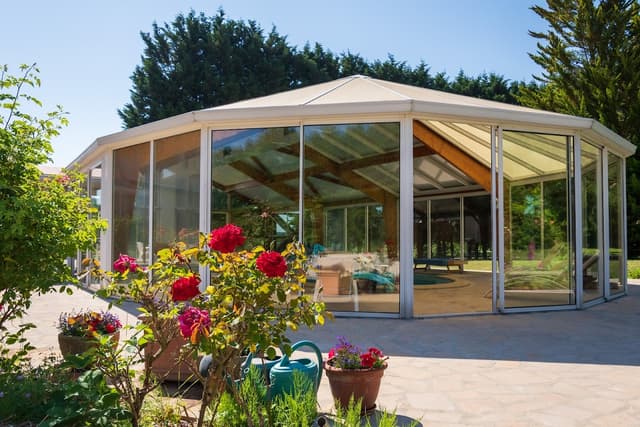
🍽️ Dining Near Château de Raray:
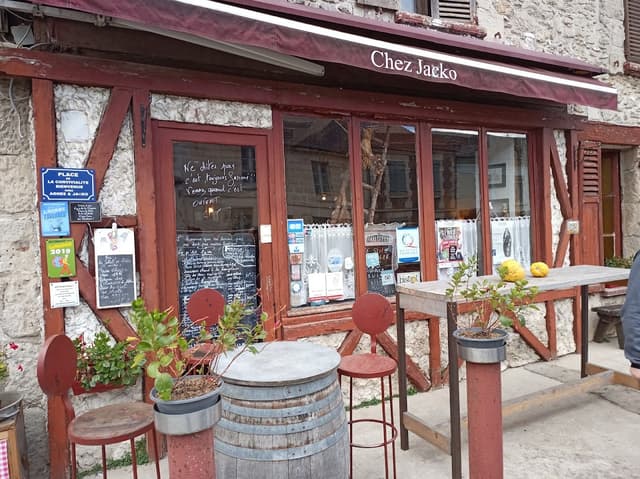
Saving Castles Tips and Final Thoughts
We're thrilled you've chosen to explore the magnificent chateaux of France with us. Let's dive into some final tips to make your chateau adventures truly unforgettable.
Planning Your Visit
First things first – planning your visit. It's always a good idea to book your tickets in advance, especially during the busy summer months. Don't forget to pack comfortable shoes – you'll be doing plenty of walking! – and maybe a light jacket. French weather can be lovely, but it can also be unpredictable, even in summer.
Timing is Everything
Speaking of weather, let's talk about timing. If you're after those picture-perfect shots without the crowds, try visiting early in the morning or later in the afternoon. The light is often magical during these times, perfect for capturing the chateau's grandeur against the backdrop of manicured French gardens.
Spring (April to mid-June): The Goldilocks season – not too hot, not too cold. Gardens burst into bloom, and you might catch the Loire Valley Wine Festival in May.
Summer (mid-June to August): Peak season with warm weather and long days. Perfect for château hopping, but book well in advance – these places fill up faster than a royal banquet table.
Fall (September to November): A photographer's dream with stunning foliage. Fewer crowds and cozy evenings by the fireplace. Don't miss the European Heritage Days in September for free entry to many sites.
Winter (December to March): Imagine snow-dusted châteaux straight out of a fairy tale. Some castles have limited hours, but you'll have them almost to yourself.
Photography Tips
Oh, and if you're into photography, don't miss the chance to snap some shots from unusual angles – maybe through an ornate window or framed by a perfectly trimmed topiary. The symmetry of French formal gardens often provides stunning photo opportunities.
Soaking in the History
Now, as you wander through these elegant halls, take a moment to soak in the history. Each stone has a story to tell. Did you know that some of these chateaux have hosted famous artists, been the backdrop for political intrigues, and even played roles in shaping French history? Ask the guides about the chateau's most famous (or infamous) residents – their tales are often more dramatic than any Hollywood script!
Family-Friendly Fun
If you're visiting with little ones, keep an eye out for the family-friendly activities many chateaux offer. From dressing up in period costumes to interactive exhibits about Renaissance life, there's plenty to keep young minds engaged. And don't worry if you hear a little one's excited chatter echoing through the grand salon – most chateau staff understand that enthusiasm can sometimes be a bit noisy!
Dining Options
Feeling peckish? Many chateaux have on-site cafes serving traditional French fare. It's a great opportunity to try local specialties or even sample wines from the chateau's own vineyards. If the weather's nice, why not pack a picnic? Just check if the chateau grounds allow it – some have designated picnic areas with views that'll make your baguette and cheese taste even better.
Supporting Conservation
As you explore, you might notice ongoing restoration work. Your visit actually helps fund these efforts to preserve these magnificent structures for future generations. If you're really passionate, ask about volunteer opportunities or how you can donate to specific projects.
Seasonal Events
Keep an eye on the chateau's event calendar too. Many host seasonal events like Christmas markets, summer concerts in the gardens, or historical reenactments. These can add an extra layer of magic to your visit.
Extra Costs to Consider
Meals: Budget €30-€100 per person for dinner (because château dining is an experience in itself)
Activities: Castle entry fees (€10-€20 each), wine tastings (€15-€50), tours (€50-€100)
Transportation: Car rental (€30-€70 per day) or train tickets (€20-€50 one-way from Paris)
Respecting the Past
Lastly, remember to be respectful of these historic buildings. Stick to marked paths, don't touch artifacts unless invited to, and be mindful of other visitors. These simple courtesies help ensure these chateaux remain standing for centuries to come.
We hope these tips help you make the most of your chateau tour. Each chateau is unique, with its own character and stories. So keep your eyes open, your imagination active, and get ready for a journey through French history and culture. Bon voyage!
Happy Exploring!
Monte & Sixteen Schumacher
FAQs About Château Stays
Q: Are château hotels family-friendly?
Q: Do I need to speak French to enjoy a château stay?
A: While it's always appreciated to learn a few phrases, most château hotels cater to international guests. Staff typically speak English, and many offer services in multiple languages.
Q: What should I pack for a château stay?
A: Think "smart casual" with a touch of elegance. Pack comfortable walking shoes for exploring grounds, a swimsuit for pools or spas, and perhaps one dressier outfit for fine dining experiences.
Q: Can I visit châteaux if I'm not staying overnight?
A: Absolutely! Most châteaux offer day visits. However, staying overnight provides a more immersive experience and often includes perks like early access to the grounds.
The home for unique & authentic travel
